There is always something about steam trains that entice me, despite me not being raised in the glorious age of steam railways. Perhaps it’s the marvellous sight of the faint grey steam rising from the boiler through the chimney up into the air, or perhaps it’s the puffing and hissing noises of the pumps, or perhaps it’s the intoxicating smell of the smoke……. despite how that sounds that might actually be true, to a certain extent. Or perhaps it’s Thomas & Friends, and (coincidentally) fun fact, Thomas the tank engine visited the GCR in 2012.
All things aside, steam trains themselves are the embodiment of various technological advancements made in the rail industry in the Industrial Revolution, and in many ways the majestic grandeur of these trains remain.
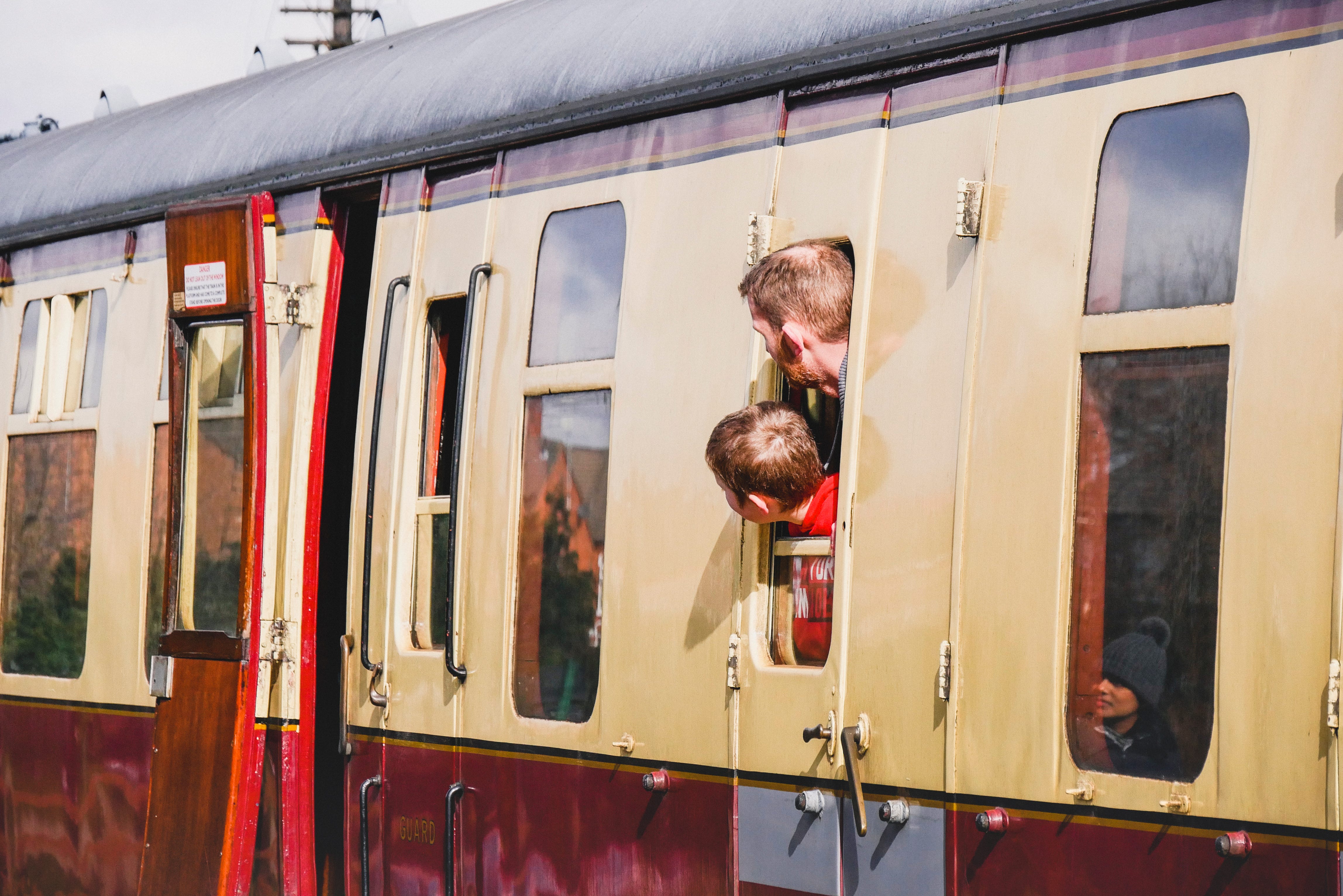
In March, I was honoured to be (partially) granted a trip to the Great Central Heritage Railway (GCR) that runs from Loughborough Central to Leicester North. This 13km railway is the only mainline heritage railway in the world with such a long distance of working double track, and it hauled what used to be the fastest steam trains in the country. At its (somewhat short-lived) peak, it ran intercity services from the North and East Midlands to the South; understandably, services were halted during the Breeching axe in the 1960s since it’s services were somewhat duplicated by the west coast mainline and midland mainline which transversed similar population centres. Apparently the gauge of the railway is standard European guage since the director of Manchester, Sheffield & Lincolnshire Railway, Sir Edvard Watkin, had very great ambitions for this railway to possibly link this network to France.
We started our journey at the ticket hall of Loughborough Centre Station. Everything at the GCR appears as if it is frozen in the 1930–60s, and right away the “strong wooden smell” of the ticket hall immediately conveys a sense of antiquity. The weird thing thing is that the wooden panels in the ticket hall have been heavily repainted, to the extent that they almost act as mirrors. This degree of glossiness doesn’t fit into black and white, but the pale wooden colour looks out of place as well.
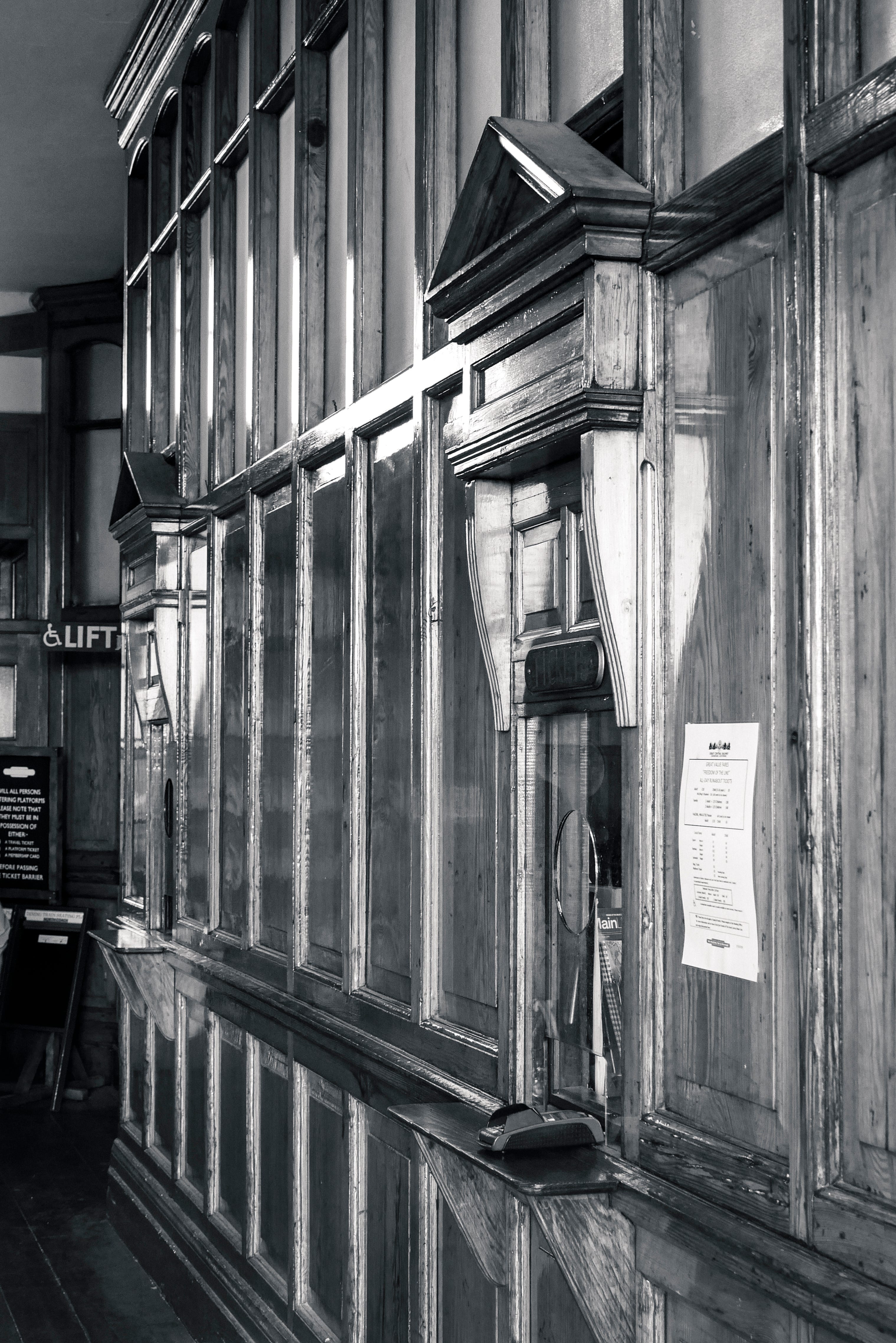
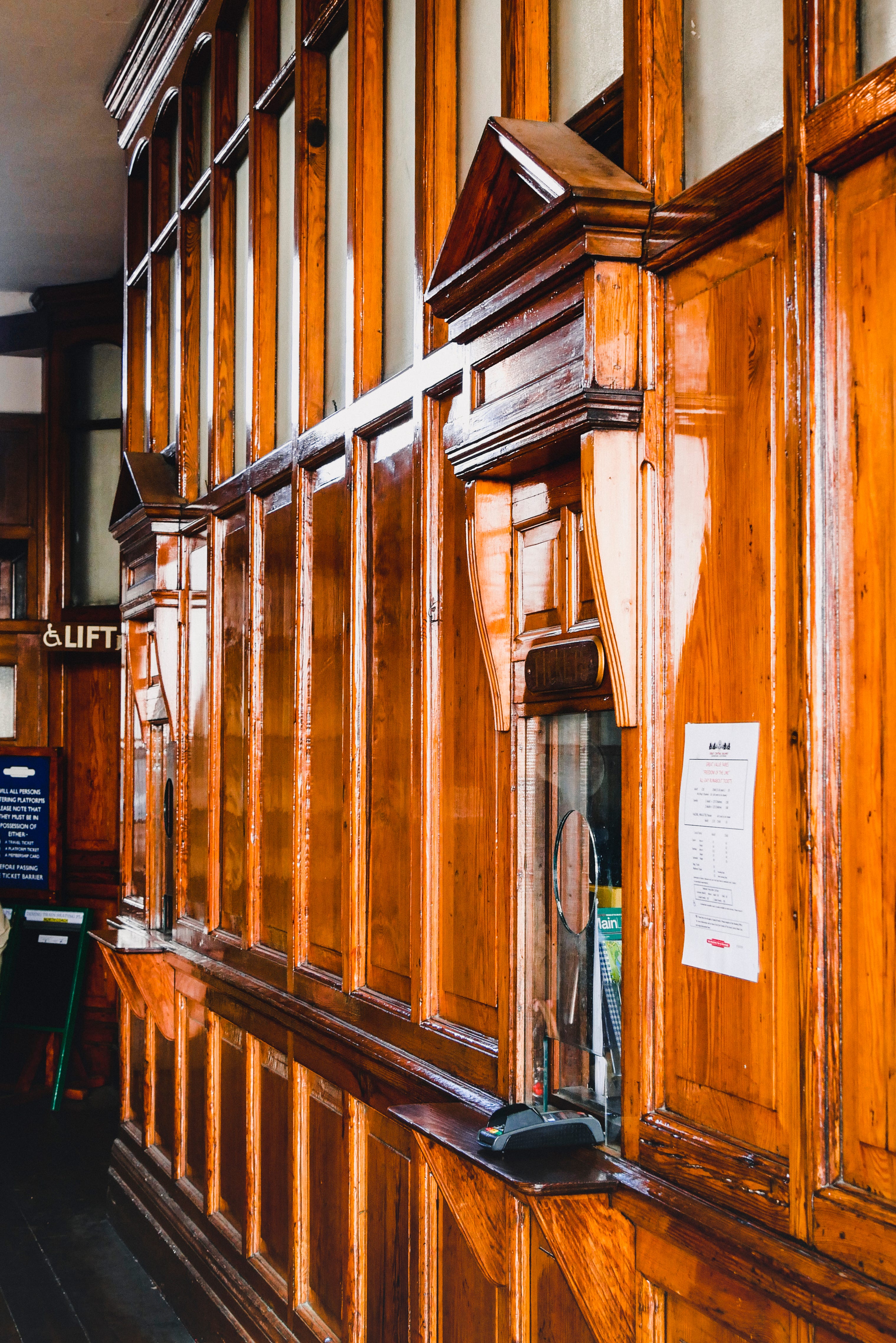
There’s also a Smith’s on the platform, except it takes the old name “W.H.Smith & Son”. The snacks sold at the store might very well resemble the 1950s, but the prices are quite far into distant future!
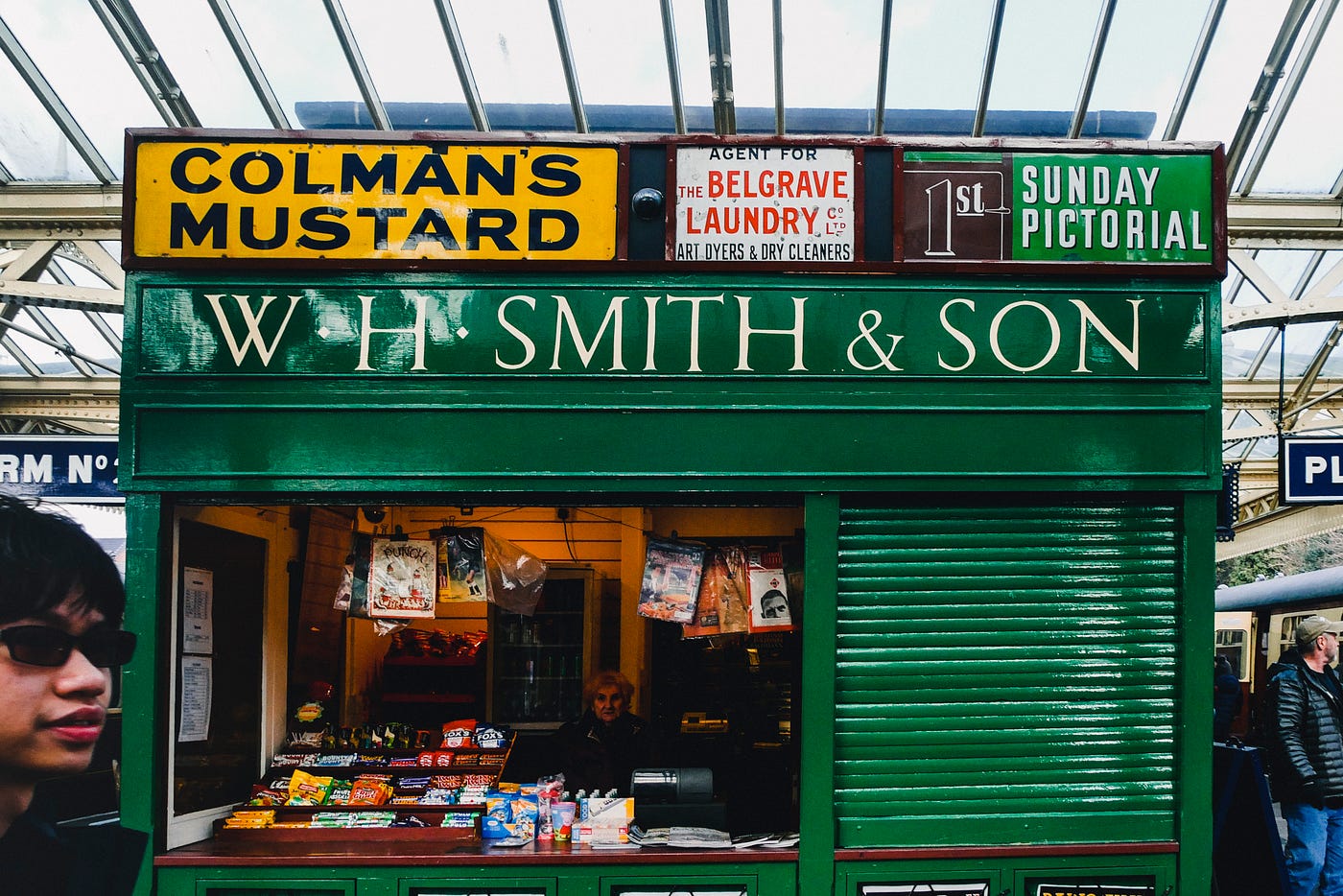
This is the list of trains running on the locomotives today. We never got on Leicester City though.
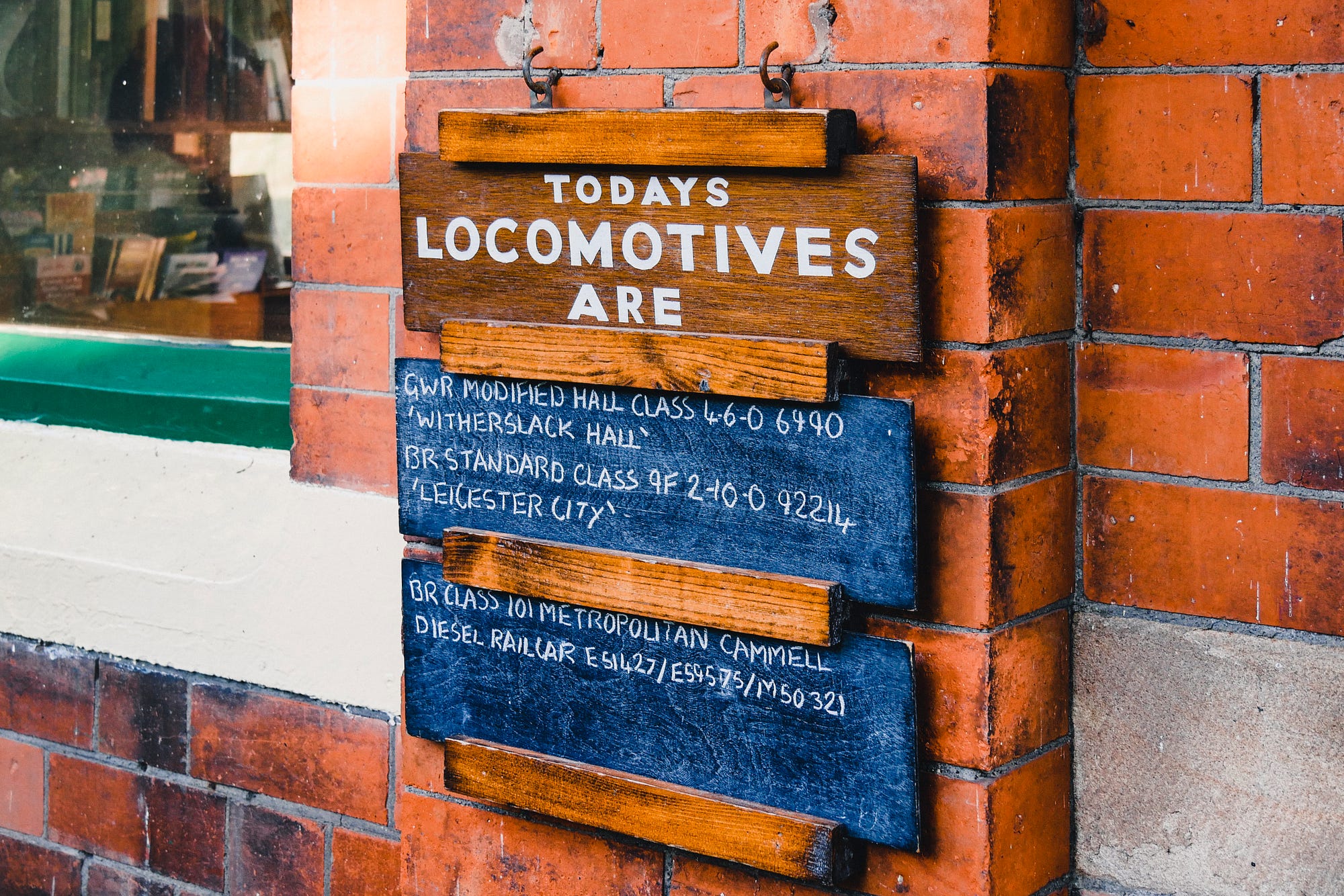
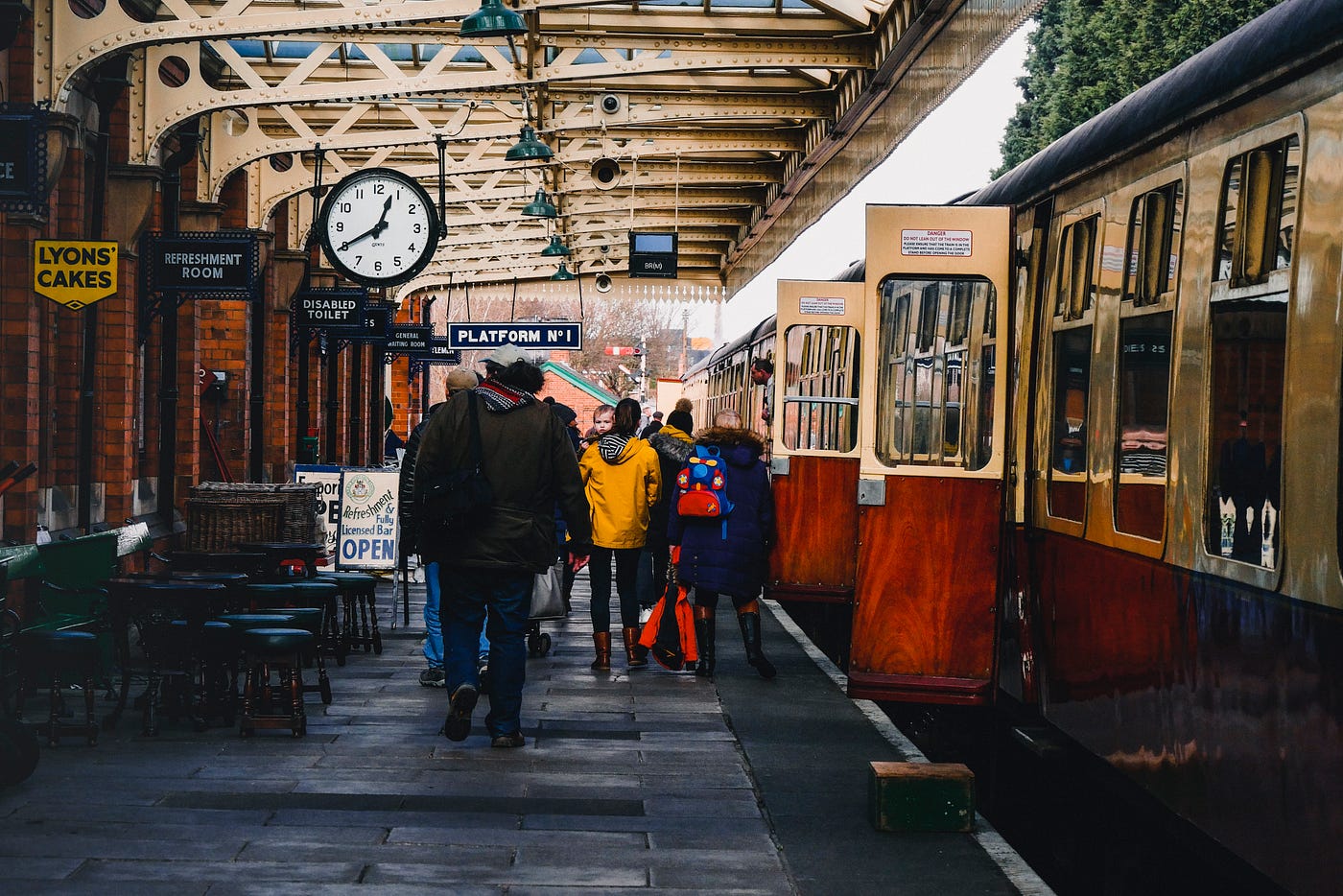
Without further ado, here comes the train!
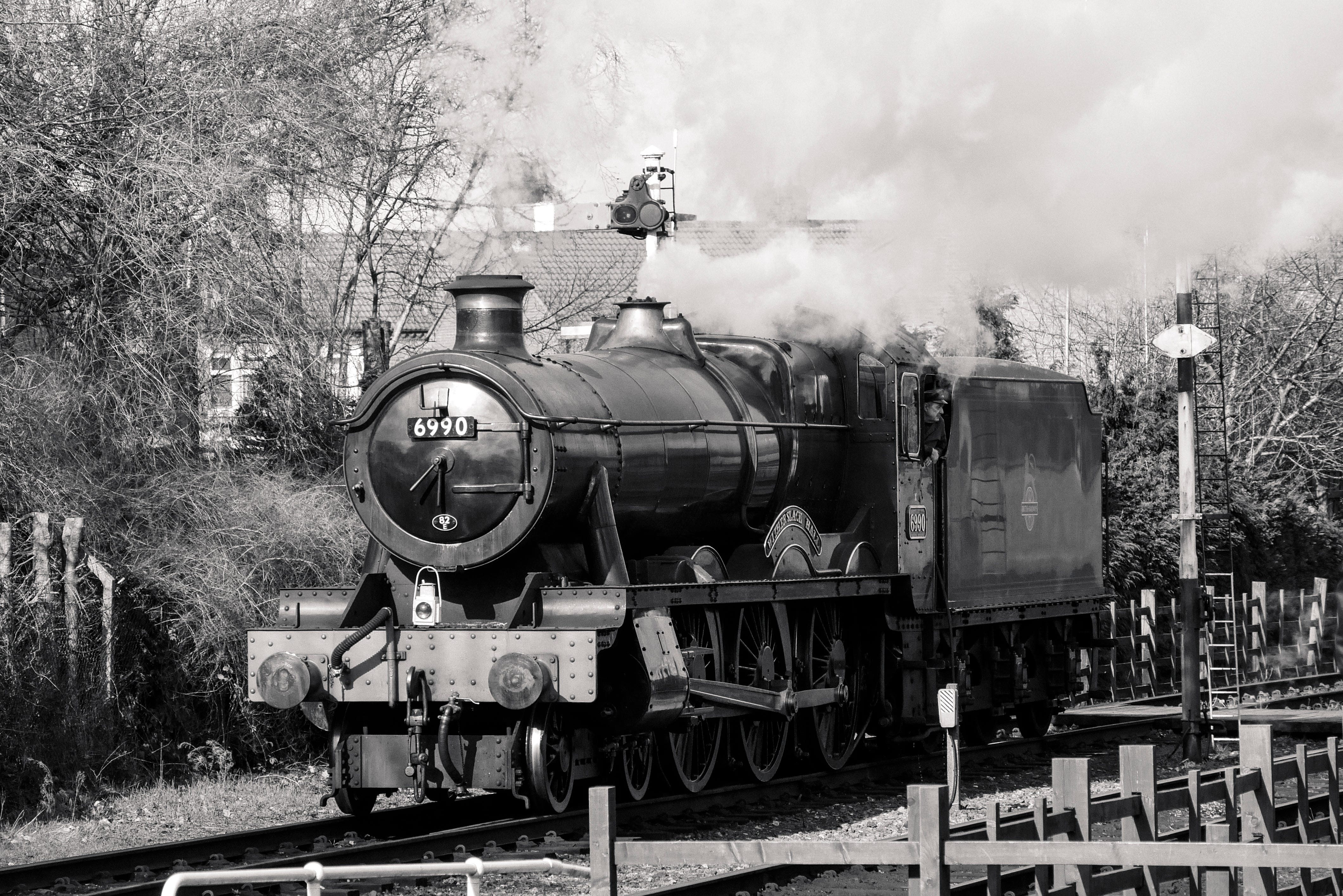
GWR 6990 “Witherslack Hall” Steam Locomotive 🚂
This is the GWR Witherslack Hall, built in 1948, and overhauled between 1975–1986 and 2001–2015.Currently it is coupled with a range of BR Mark 1 passenger coaches. It’s somewhat jarring to think that these steam locomotives (and passenger coaches as a matter of fact) are newer than fairly decent EMUs, like the 1938 Stock for the London Underground.
On a side note, the London Underground 1938 stock has been running in Isle of Wight since its retirement, and I really need to catch a glimpse of them before they soon get replaced by “newer” British Rail Class 484 or refurbished D-stock trains. Ideally it would be nice to see them both running in parallel, but under current circumstances it is hard to predict the fleet replacement schedule anways.
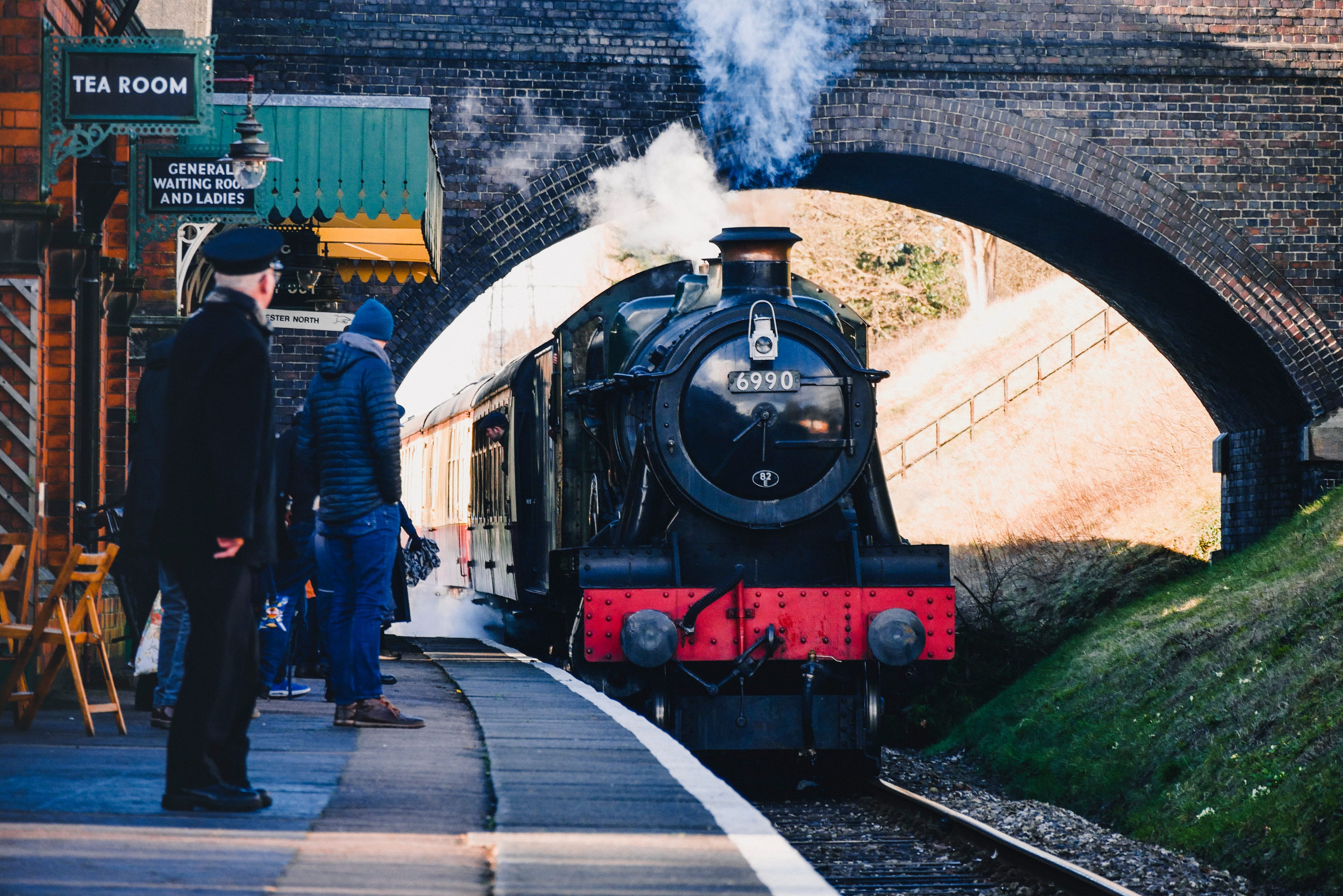
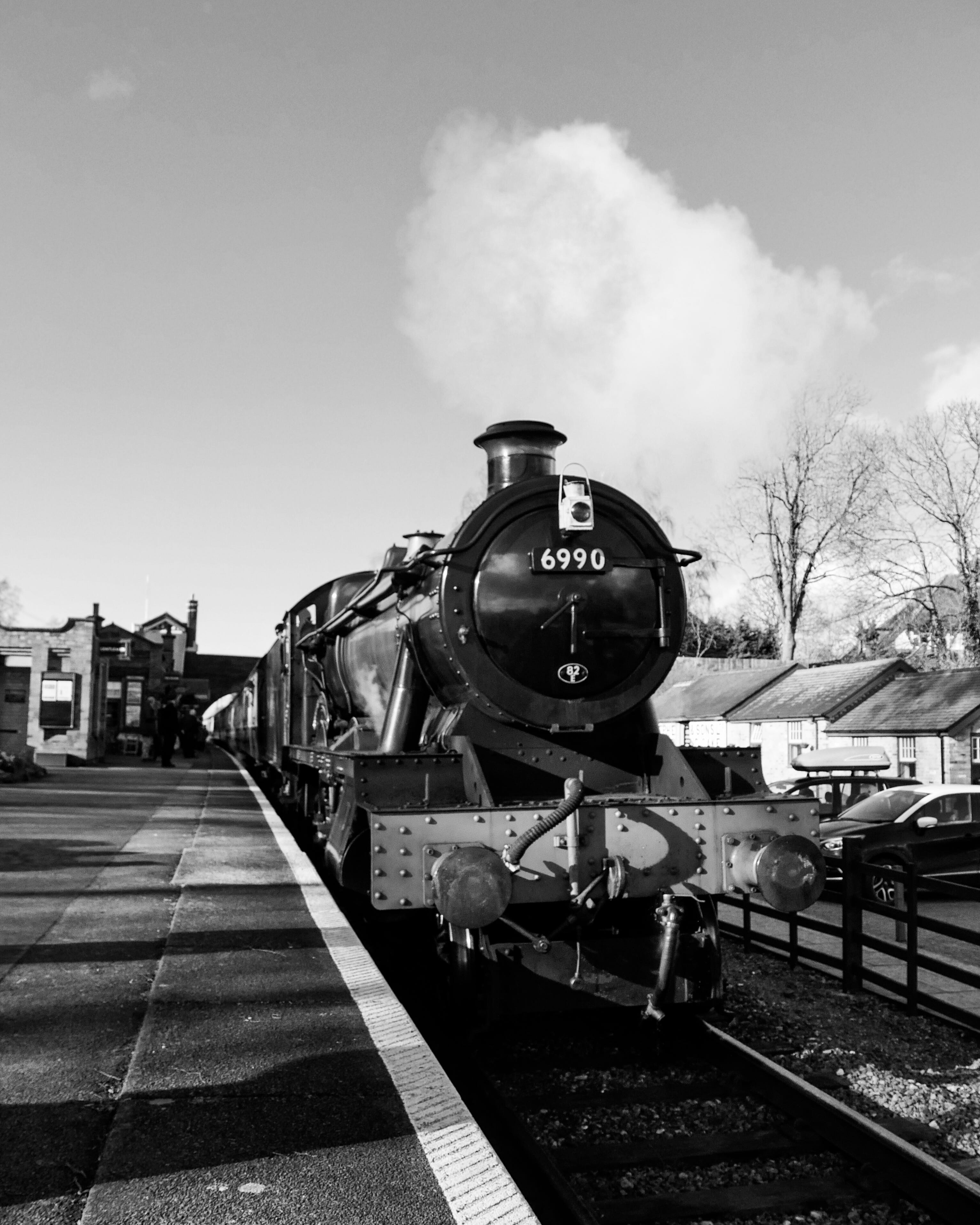
This is a freight carriage situated 2 carriages from the end. There are also dedicated sliding doors at the middle of the carriage, not shown in the photo. I’ve seen a similar carriage like this in the Hong Kong Railway Museum as well, but that one appears to have a larger capacity.
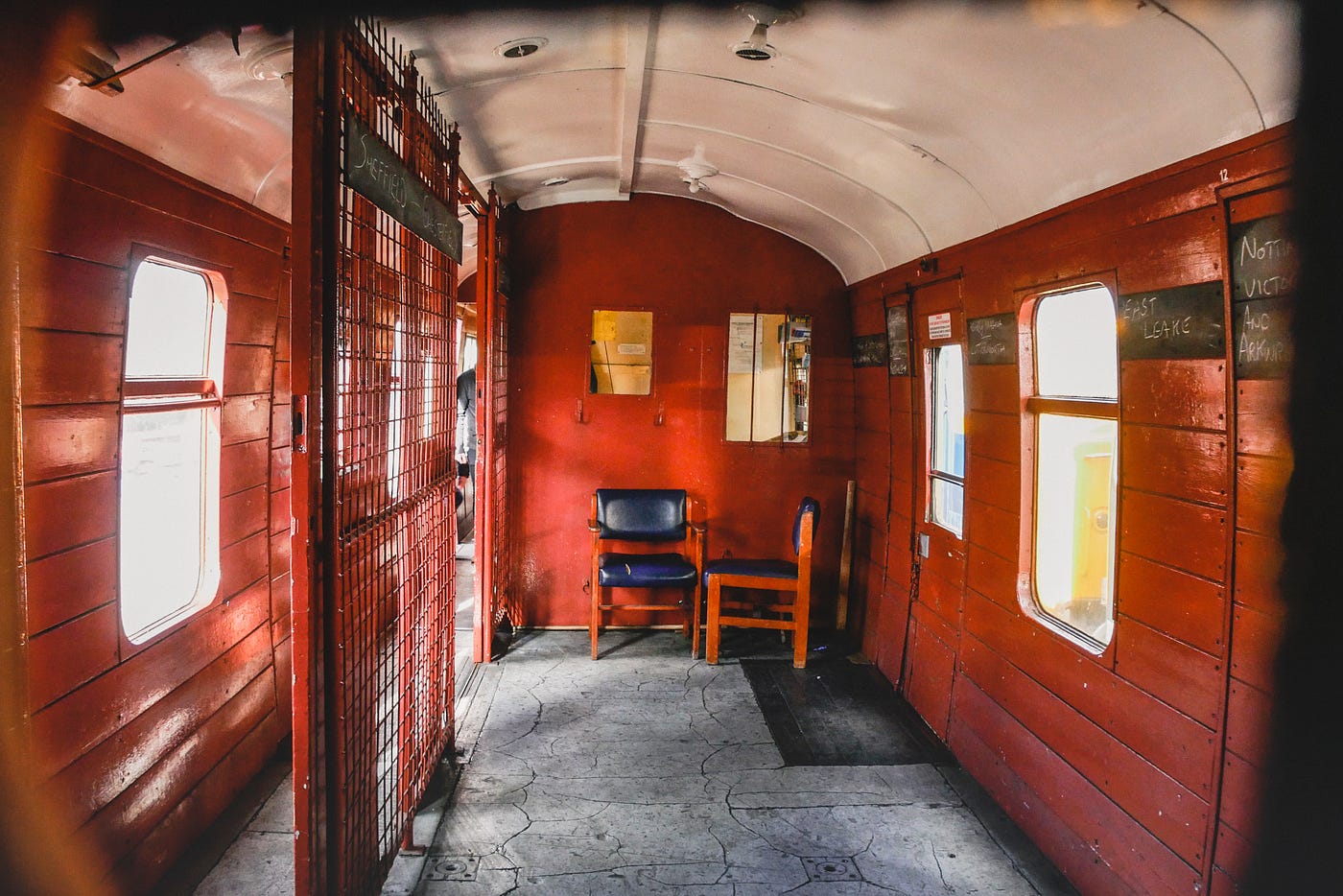
Heater knobs are available within every carriage, oddly even within this freight carriage. Not sure what the purpose of heating is for freight carriages, but nonetheless a very consistent feature.
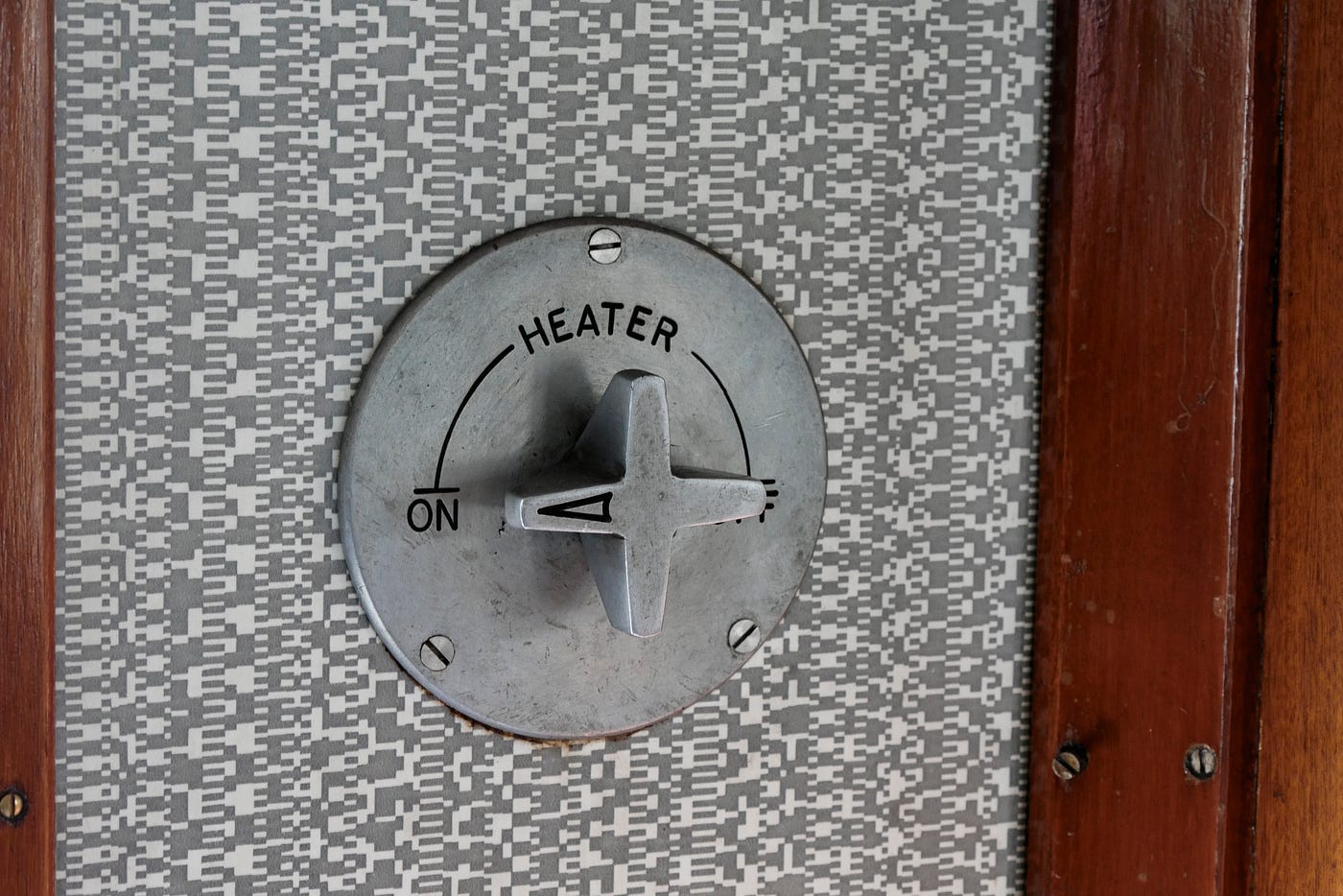
Every BR Mark1 carriage is in fact slightly different from the other, with different seat moquette covers. Ever since I’ve came to the UK I’ve really started to get obsessed with seat moquette covers, which is something railway companies really pay a lot of attention to.
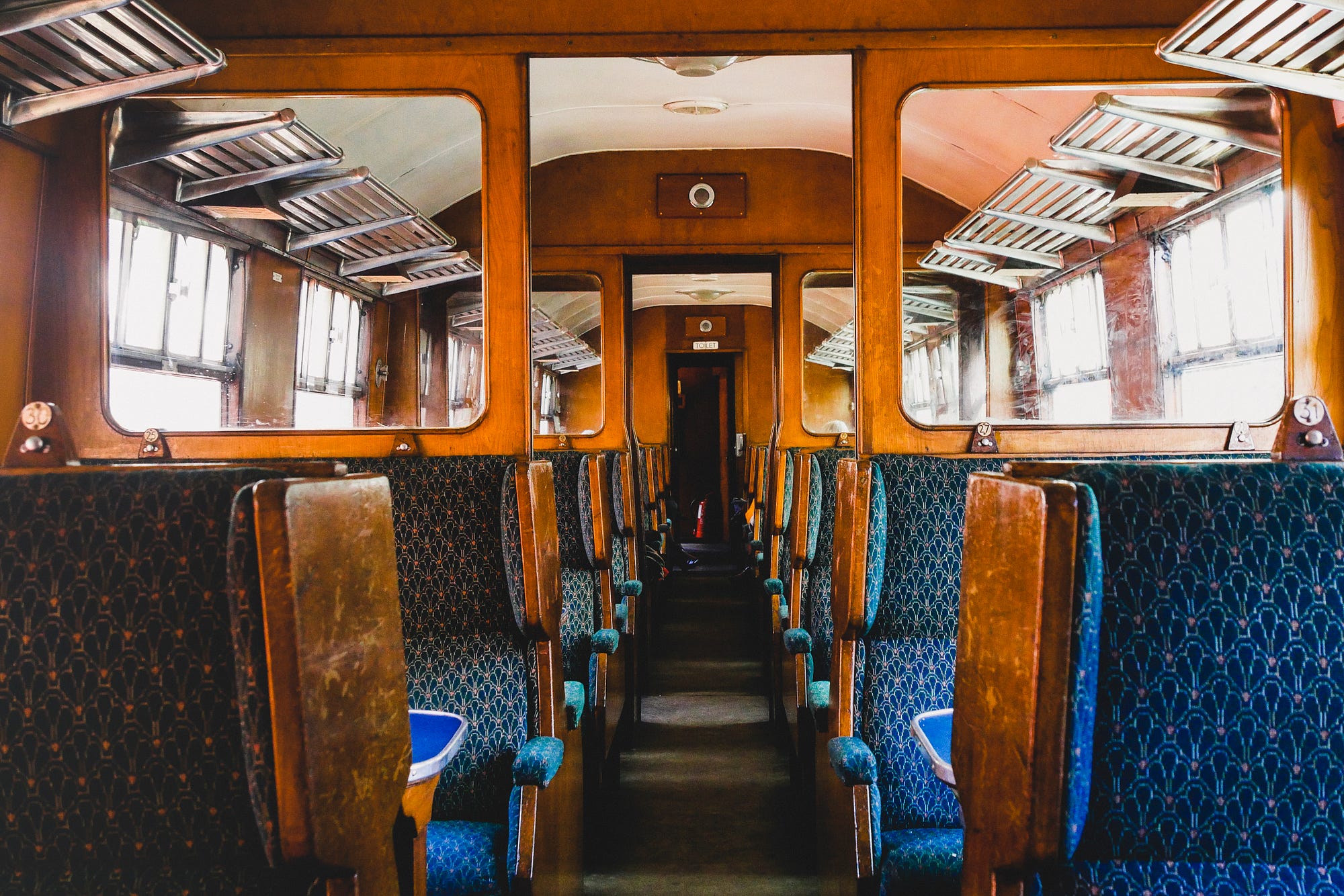

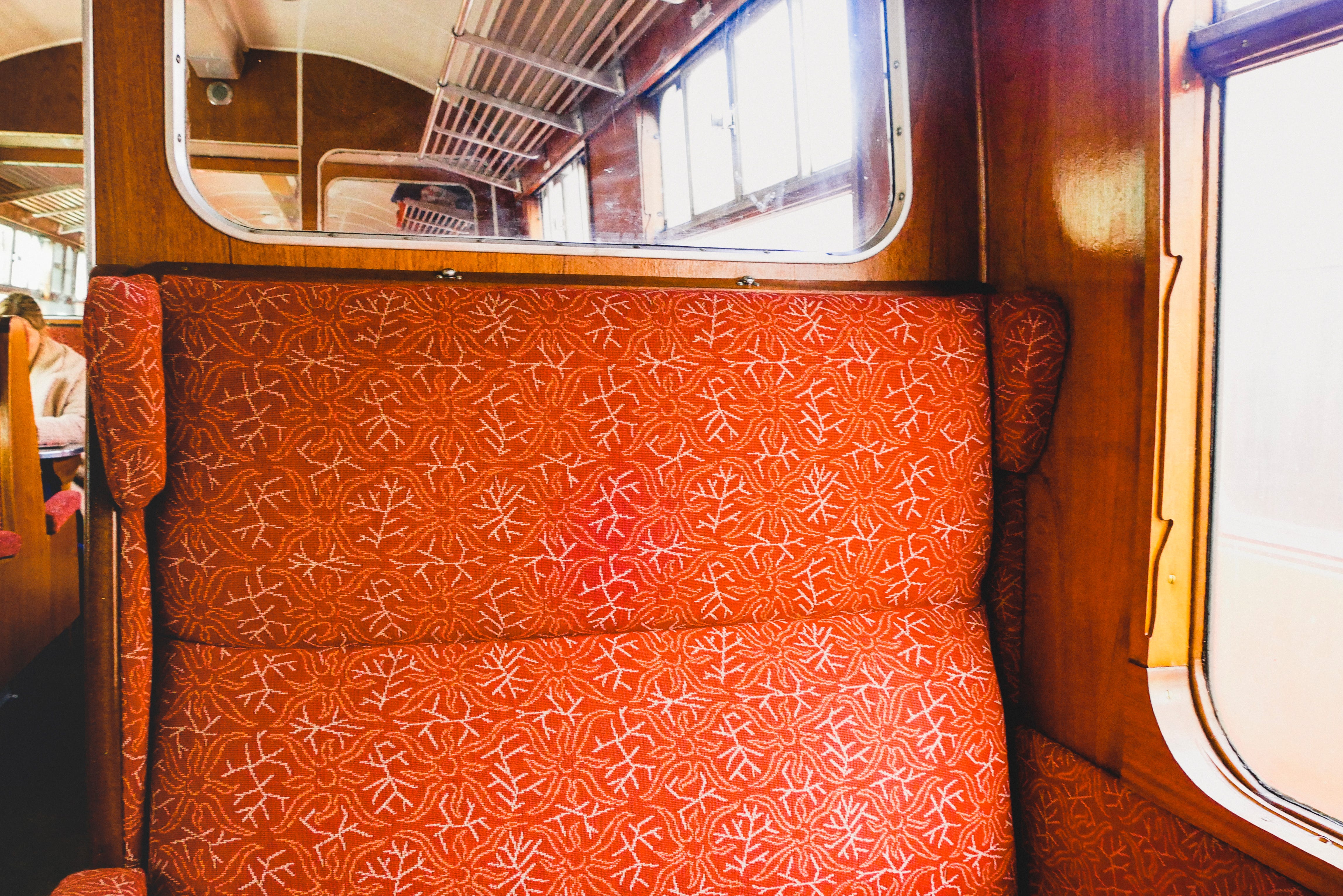
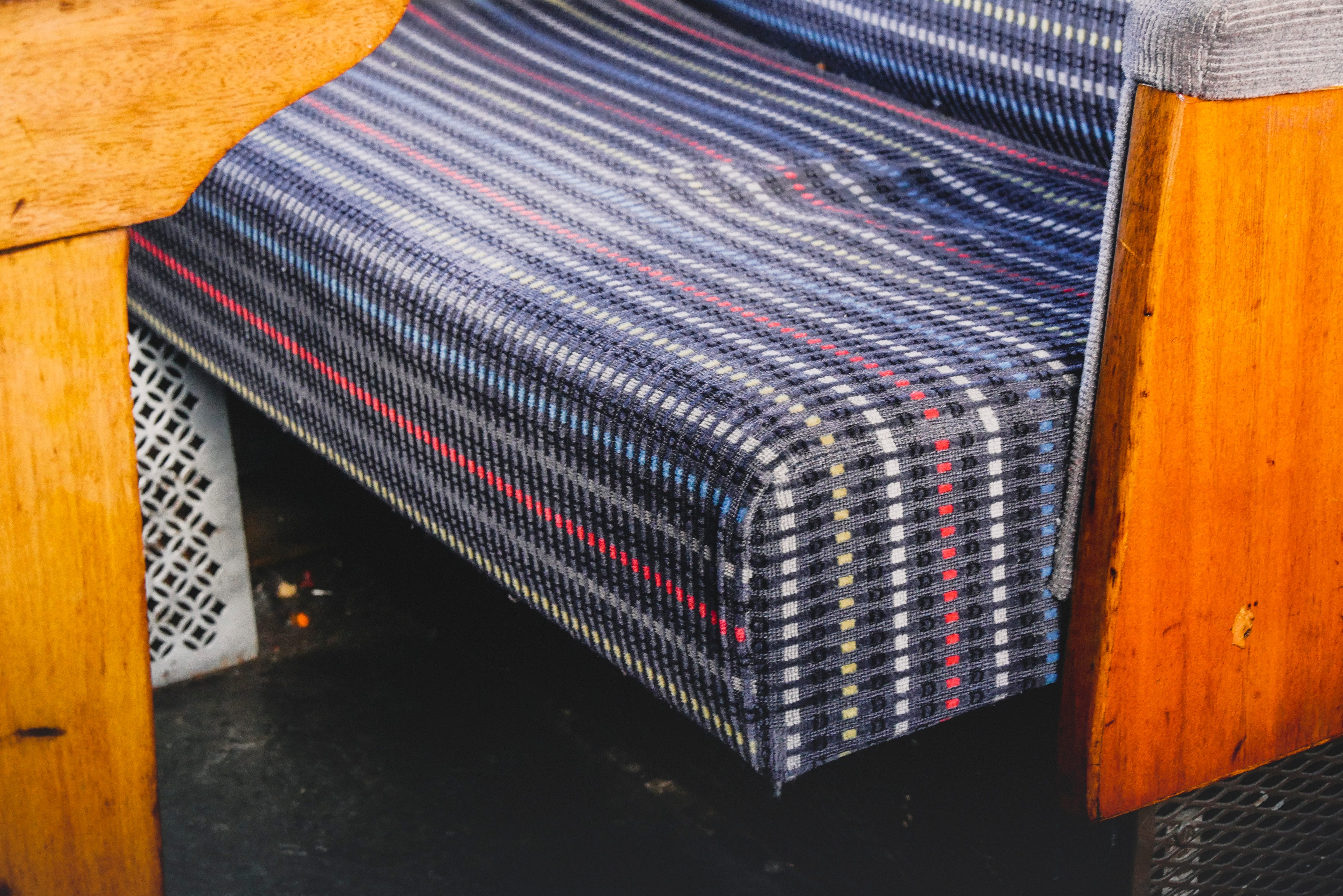
Despite being a third class cabin, the vibe very much supersedes that of modern day first class cabins, and we could really see why the GCR was promoted as a “Rapid Travel in Luxury”. However, the luggage racks do look a bit narrow for a decently sized suitcase, and in terms of modern day standards, I would imagine them being extended to the isle. Another nice touch is the perfectly aligned windows, which railcar companies seem to ignore today to cram as many passengers as possible into a carriage.
There are also more luxurious cabins at the end of the train with more privacy. In fact I recall they looked very much alike to a few scenes in ‘Mr Bean Rides Again’, but unfortunately those cabins were quickly occupied when we got on the train.

Steam……
Through the window silts I hear
Muffled shrills fleeting into my ear
Down the valley the train slowly trills
Through the underpass the steam stagnates still
Whoosh…… it plummets into my nostrils……I
Cough!
Instantly someone scoffs
at me with a look of disapproval, as I reach for my thermos
for a dose
of steam from my boilingly hot water.
Which sort of steam do I fancy more?
(dammit I wish I got myself the £2 hot chocolate ☕️ from the kitchen car, which would definitely have elevated this spontaneous train of thoughts in a superior/finer way. Ironically the hot chocolate on this touristy train costs less than a college-subsidised mug of hot chocolate at the EEE cafe, but who brings cash?! — I blame the UK for making me overreliant on contactless!)
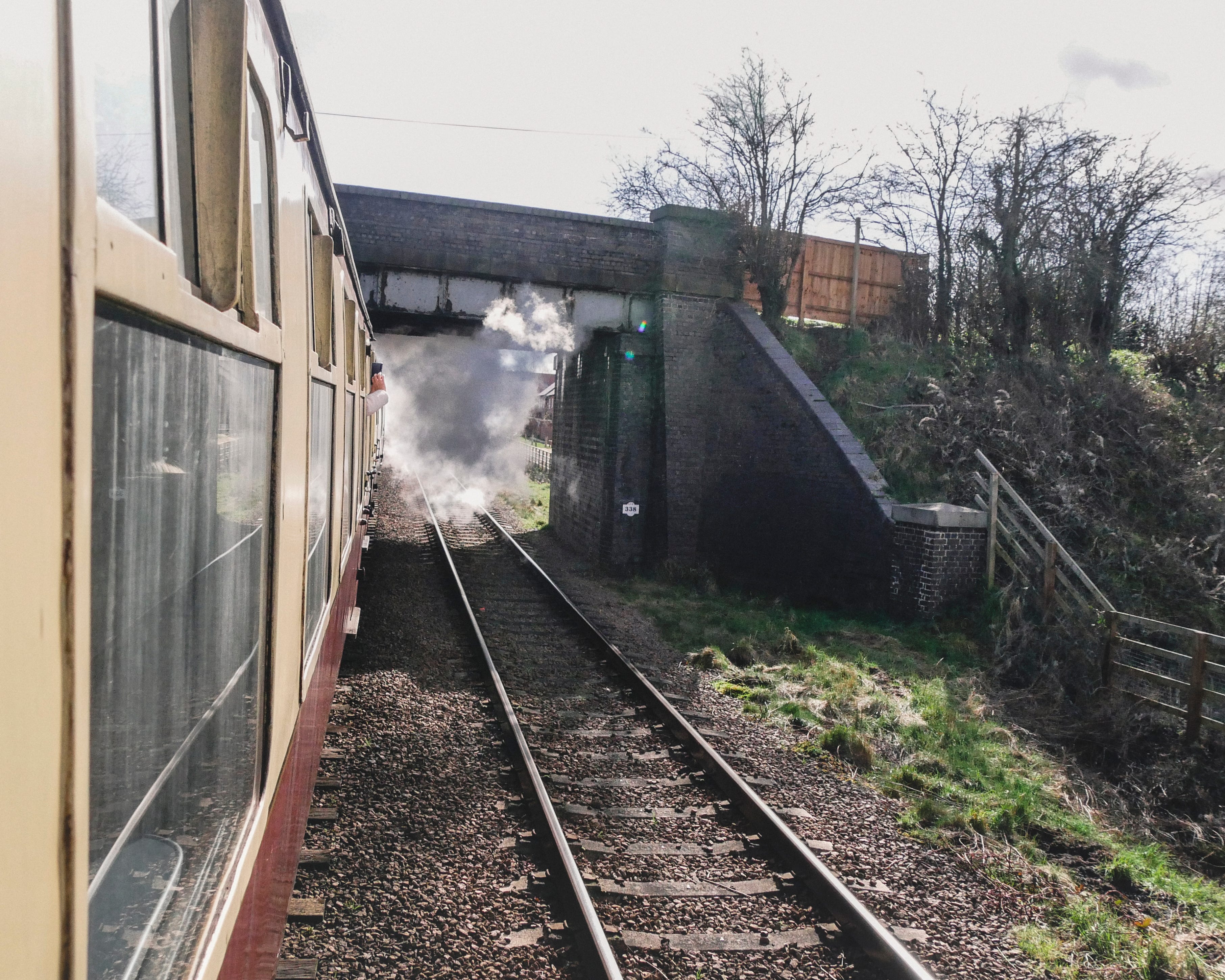
In addition, there are lots of commercial and industrial railcars lying around at various sidings down the mainline; some of them looks as if they are abandoned, others as if they were manufactured yesterday. The British Rail Class 101s appears to have gotten a repaint very recently, and the British rail blue/ yellow combination looks very sharp!
Check out the end of this story for more photos on the BR Class 101s.
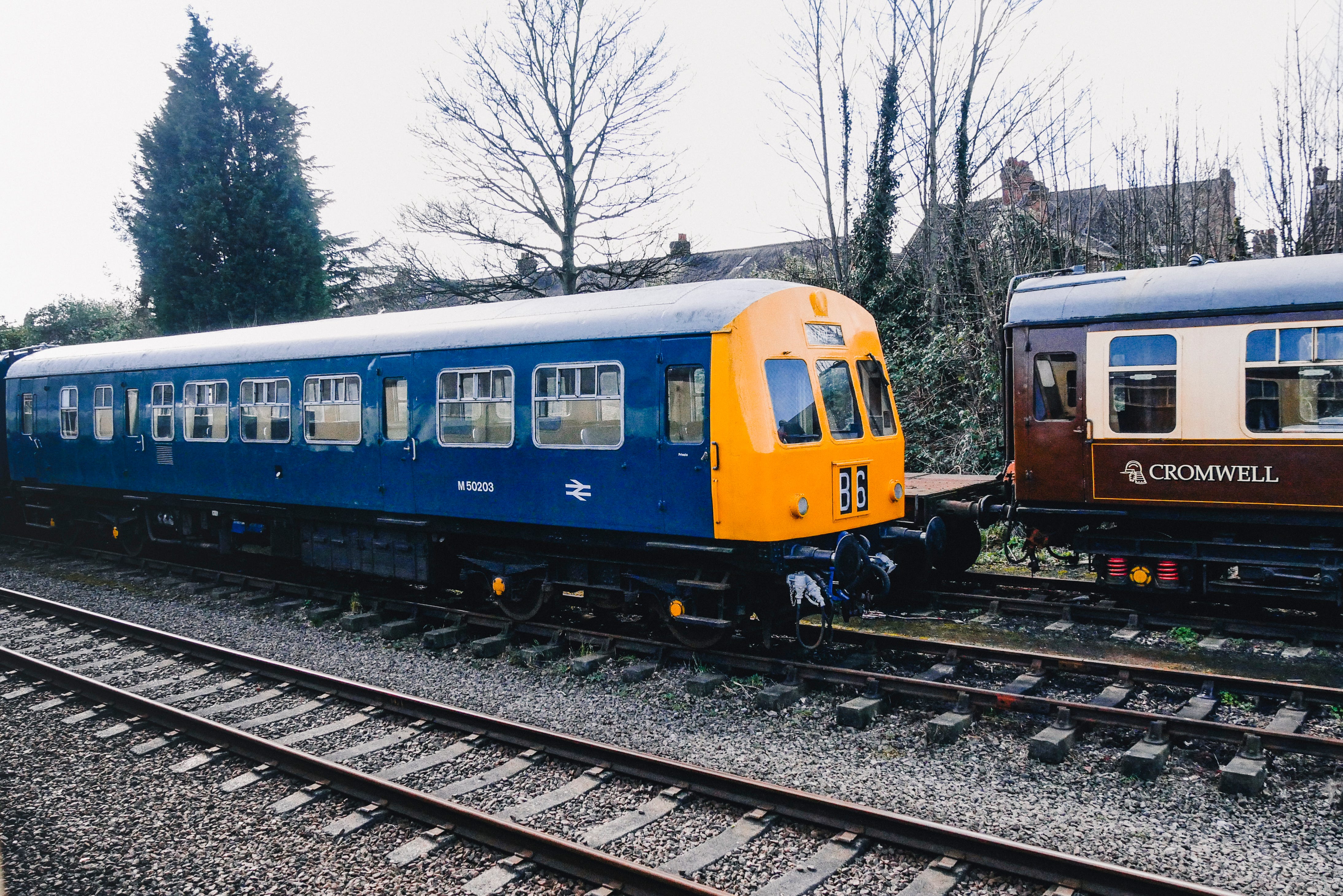
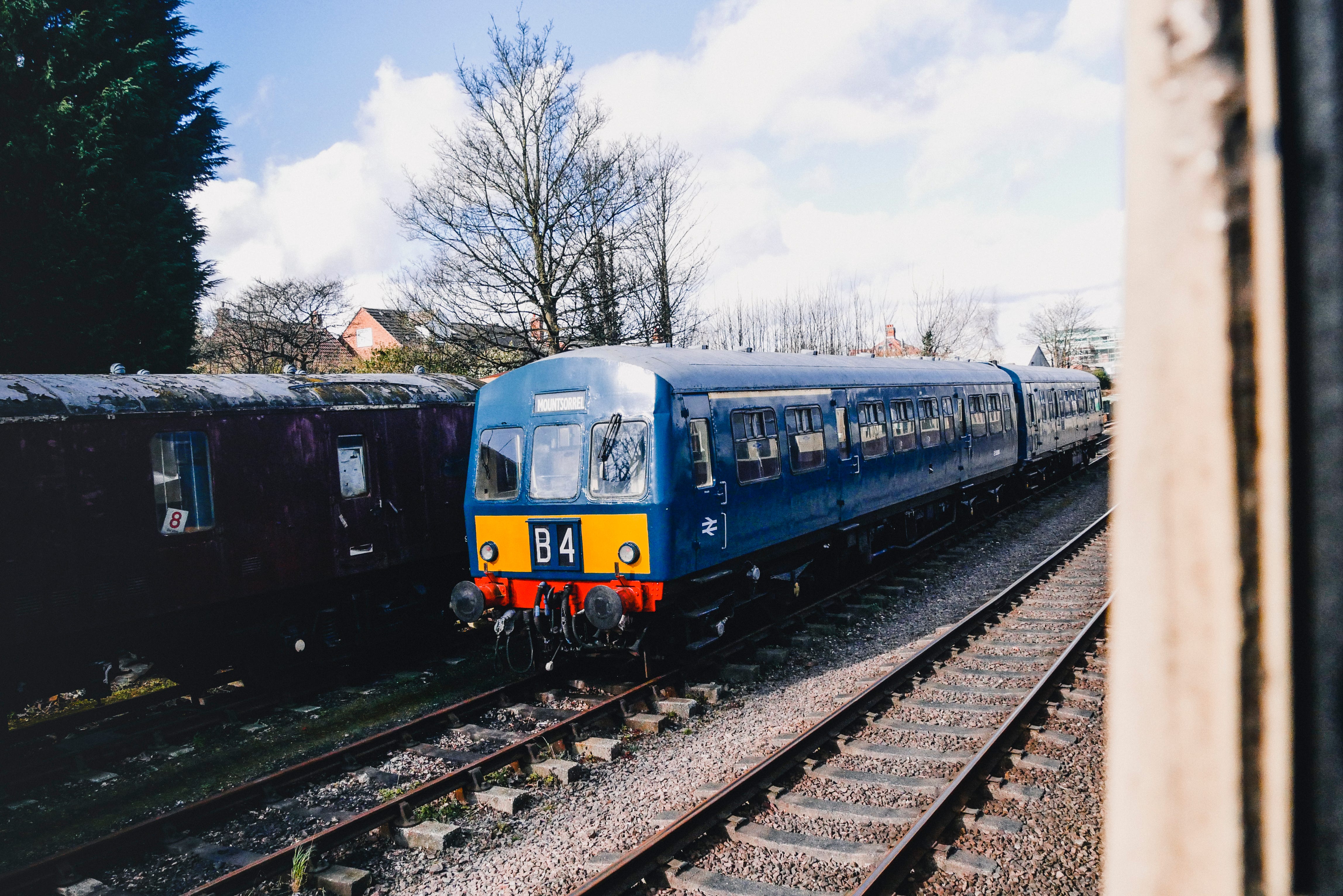
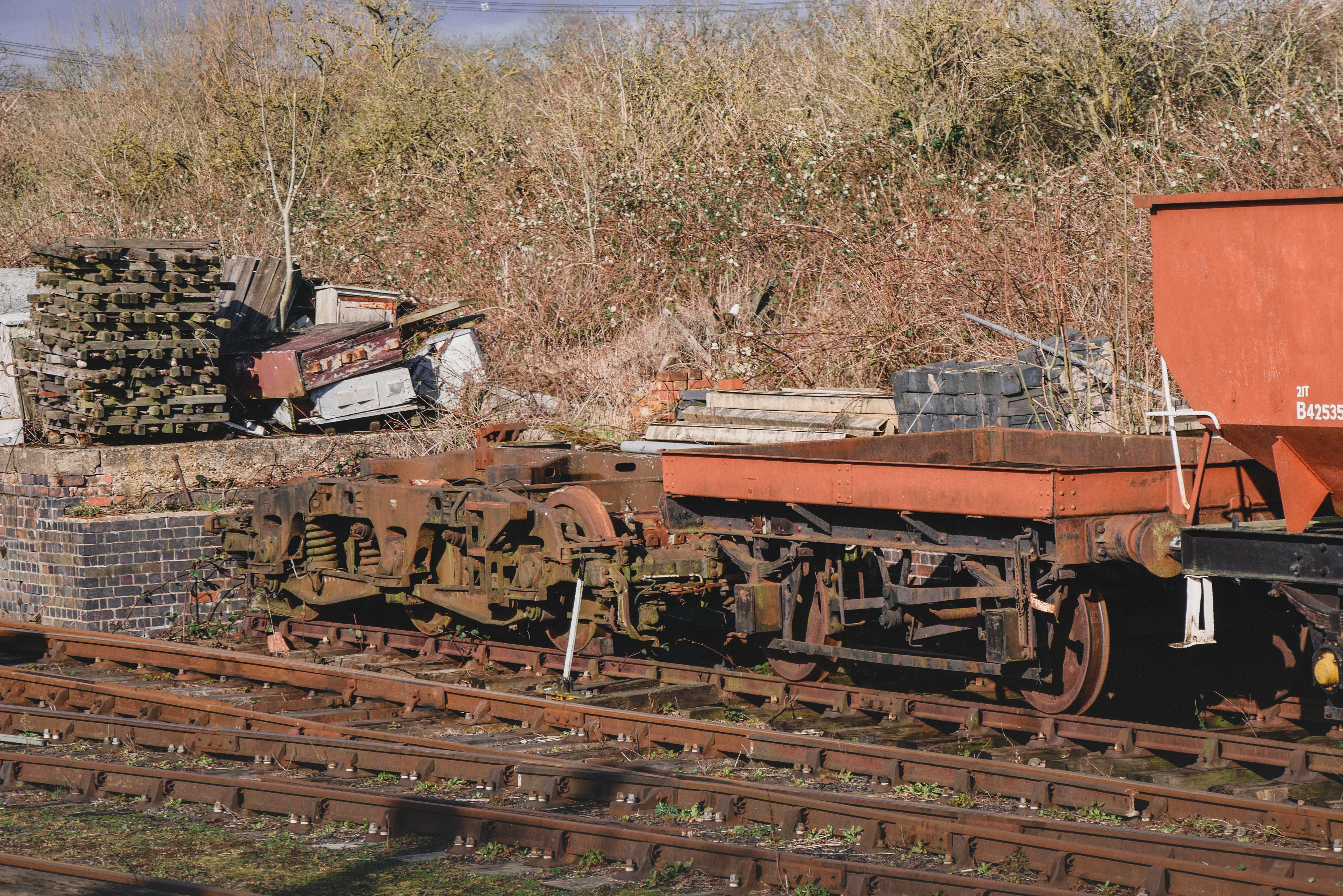
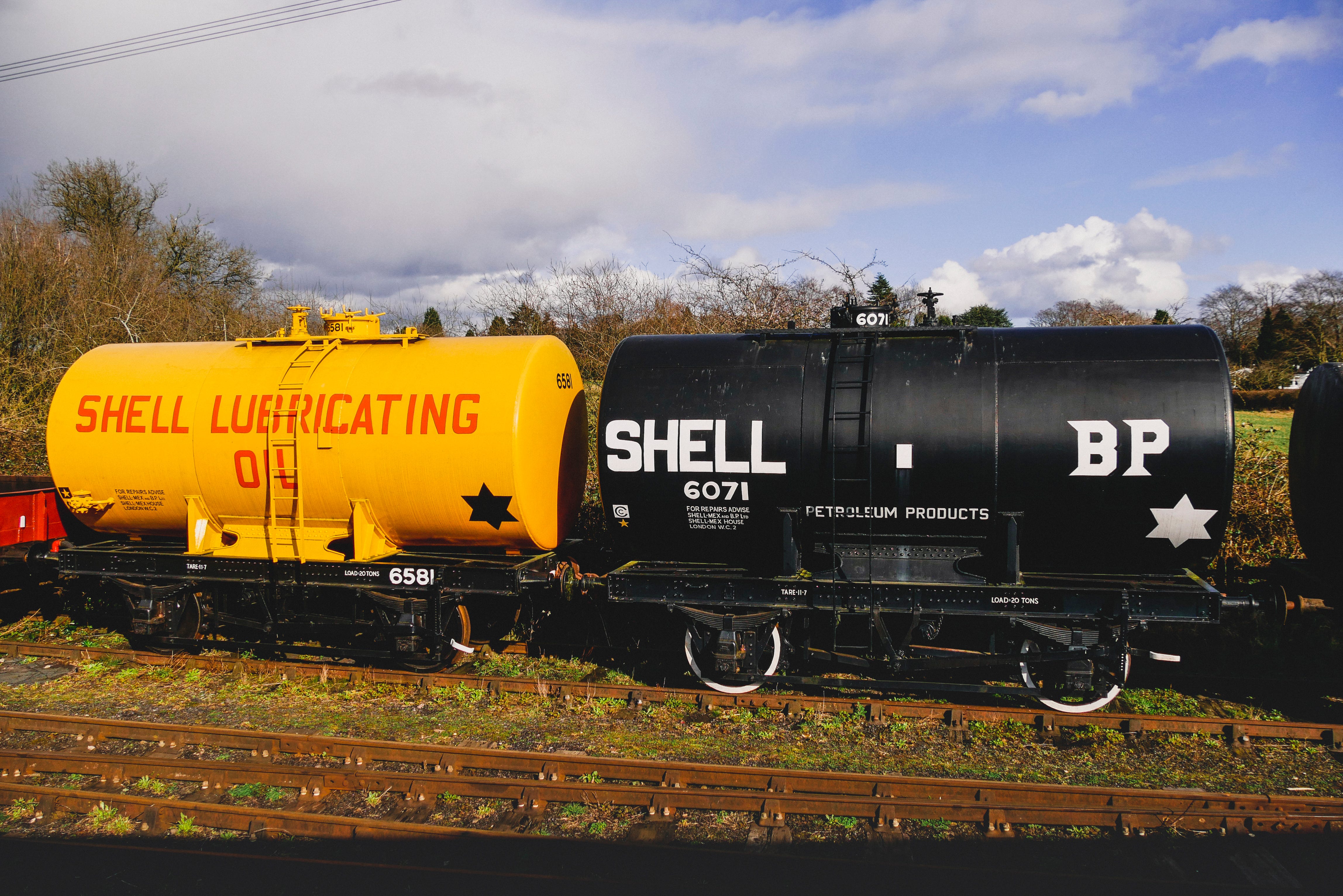
And here’s a view of a not-so-spectacular-typical-boring-British countryside through the ventilators as the train steadily strolls southwards. Still very pleasant though.
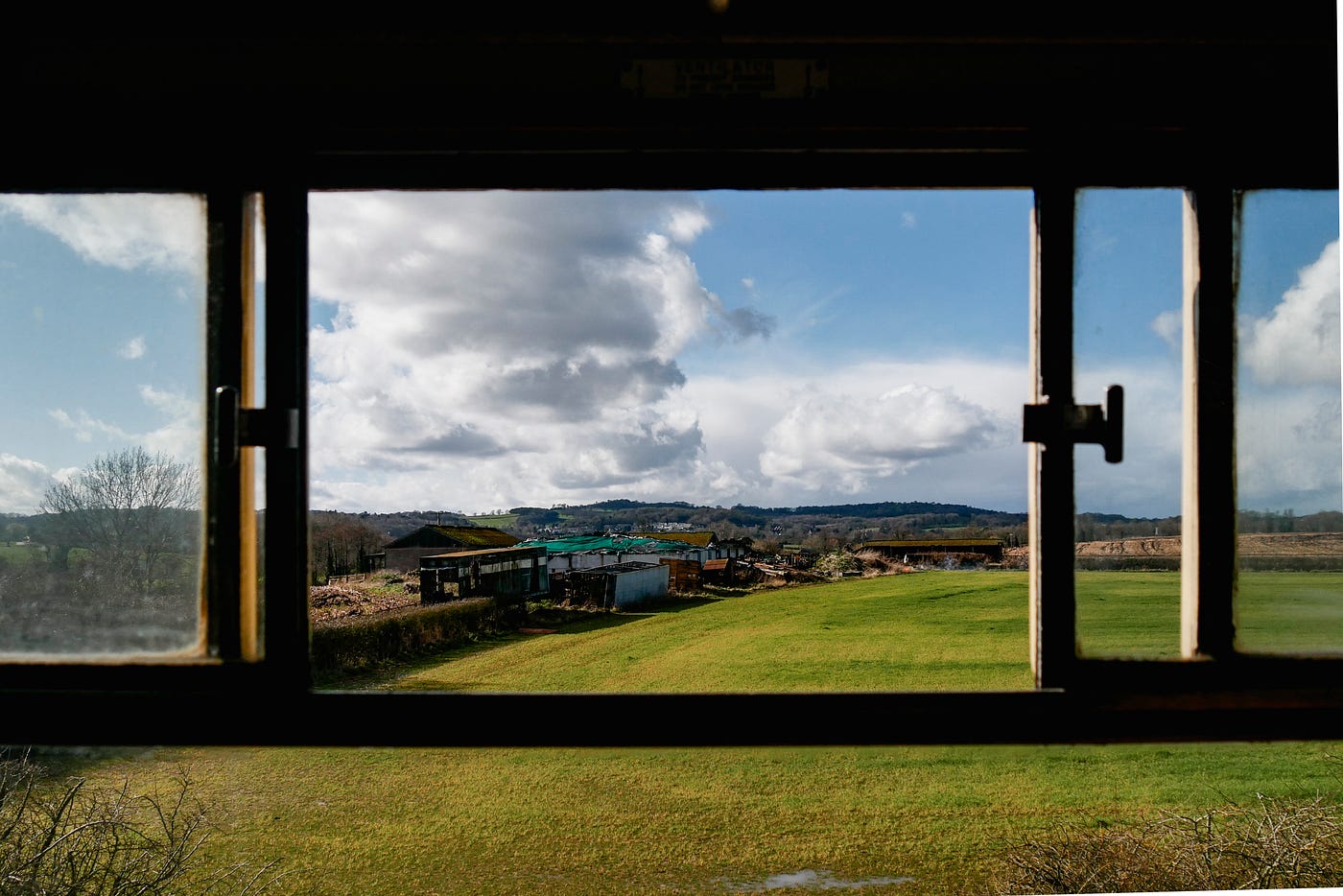
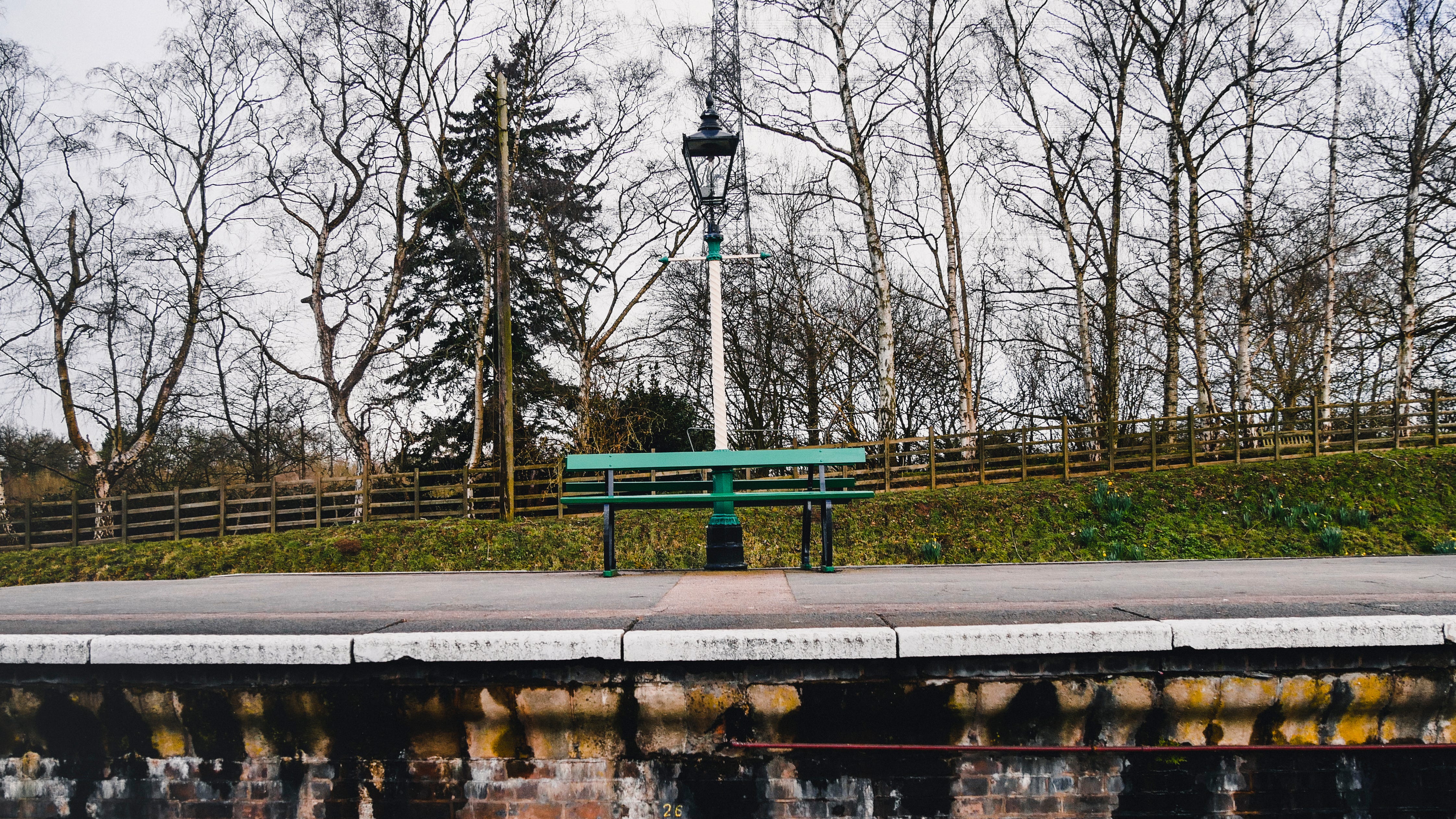
Quorn and Woodhouse Station, Rothley Station
There are 4 stations in total at this heritage railway, and they are, listed from North to South:
- Loughborough Central, restored to the 1950s
- Quorn and Woodhouse, currently grade II listed, restored to the WWII era.
- Rothley, restored to the Edwardian era
- Leicester North, restored to the 1960s.
I can’t seem to exactly find the products advertised in these ads, but we are told that these are real, not recreated from wartime.
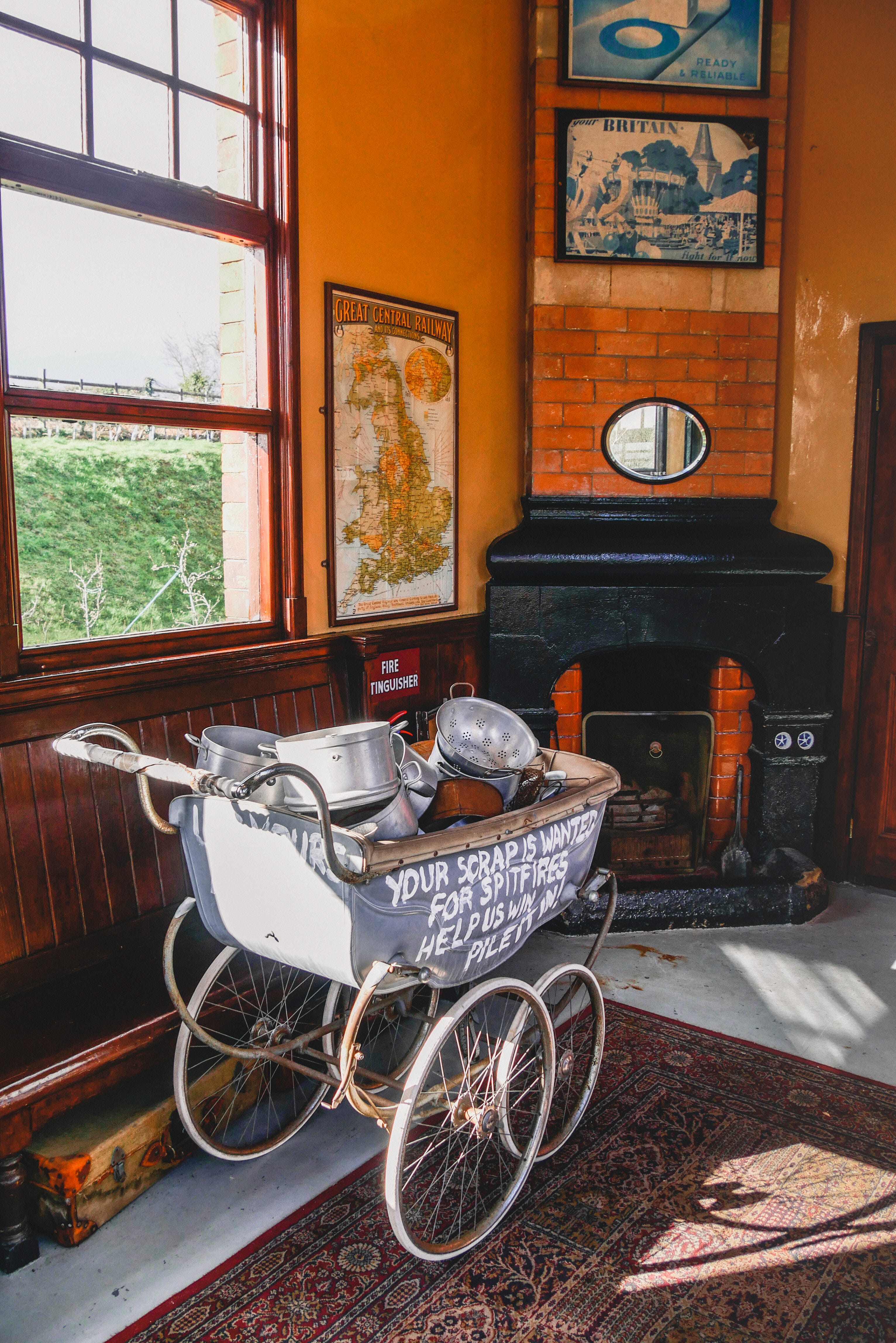
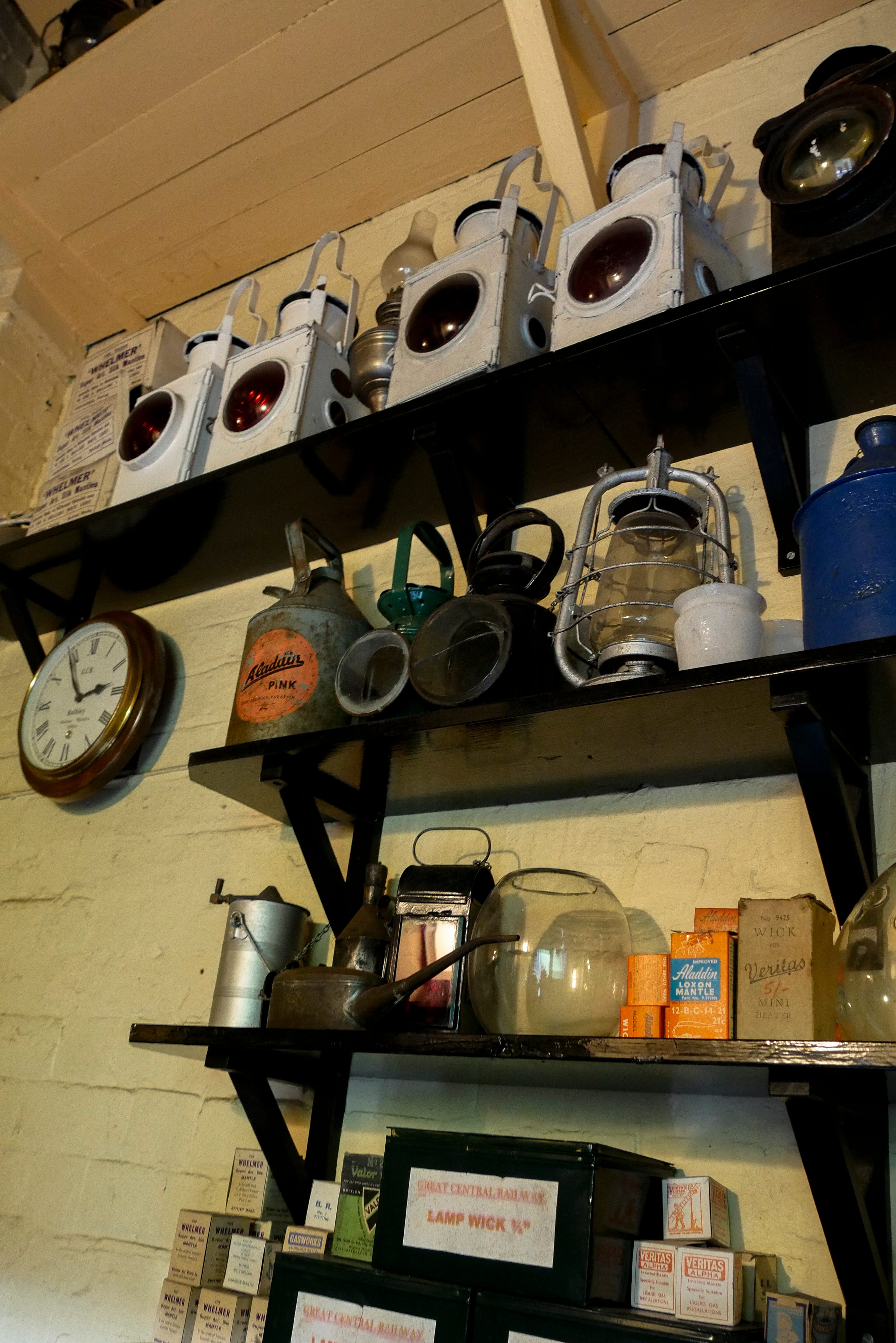
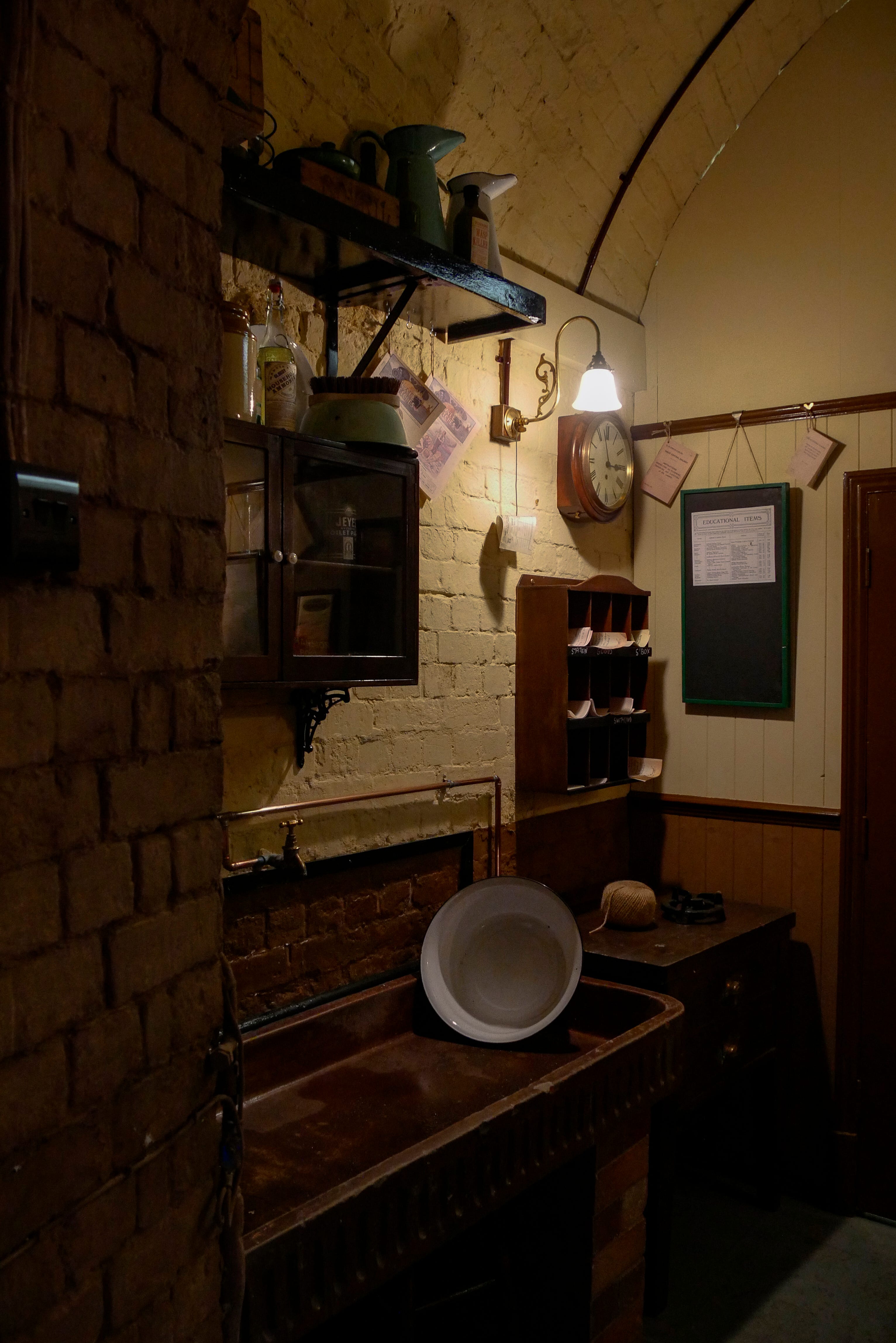
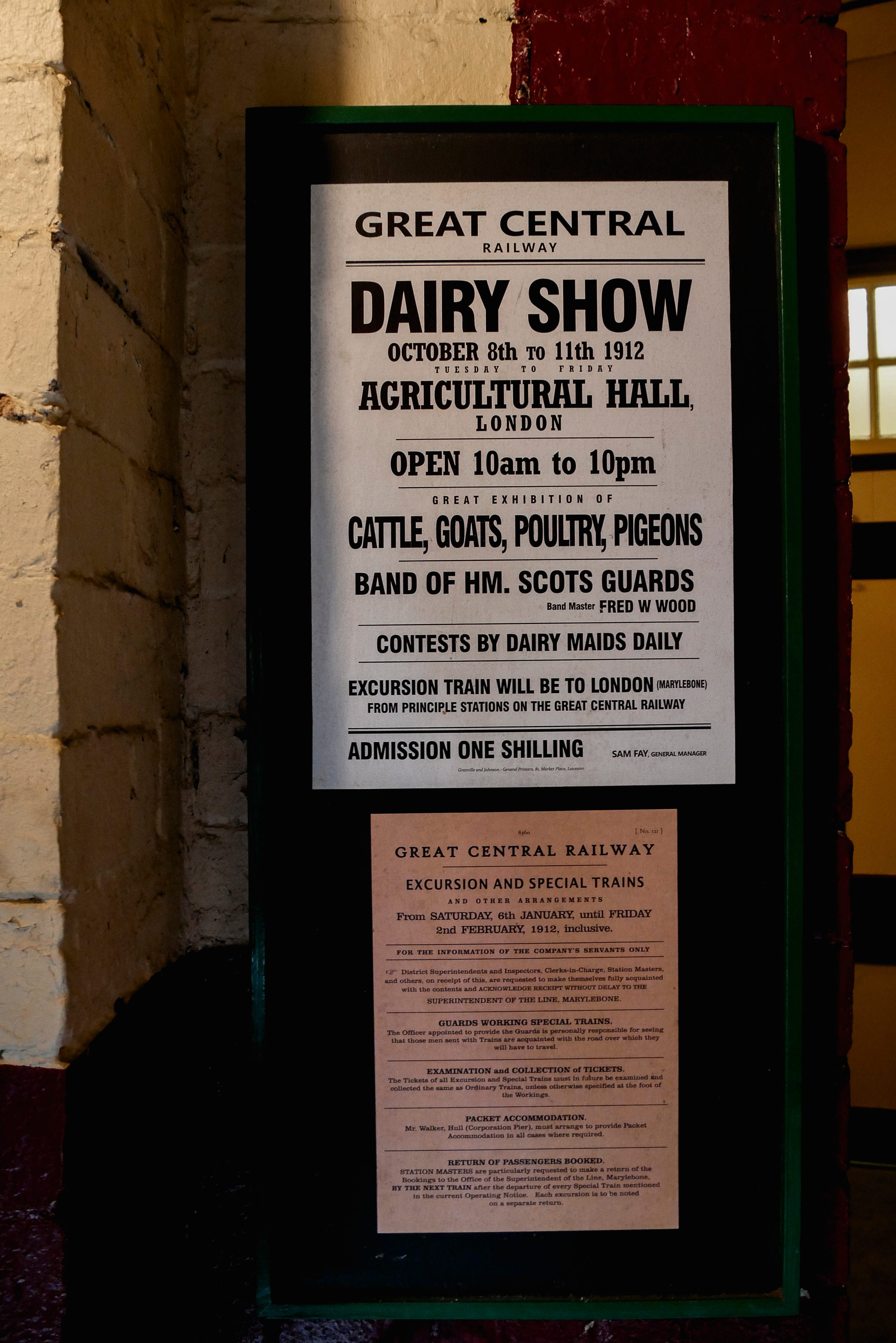
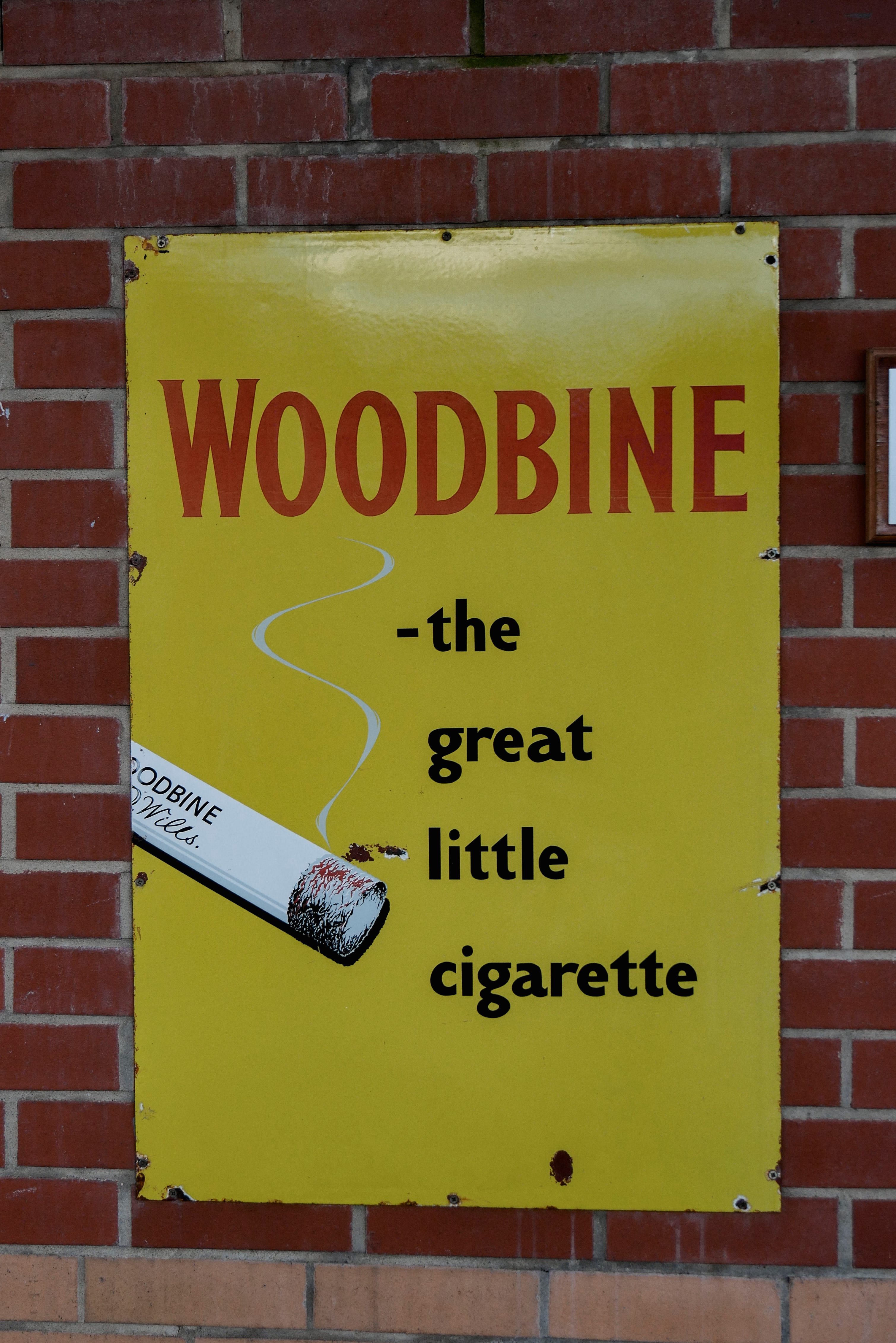
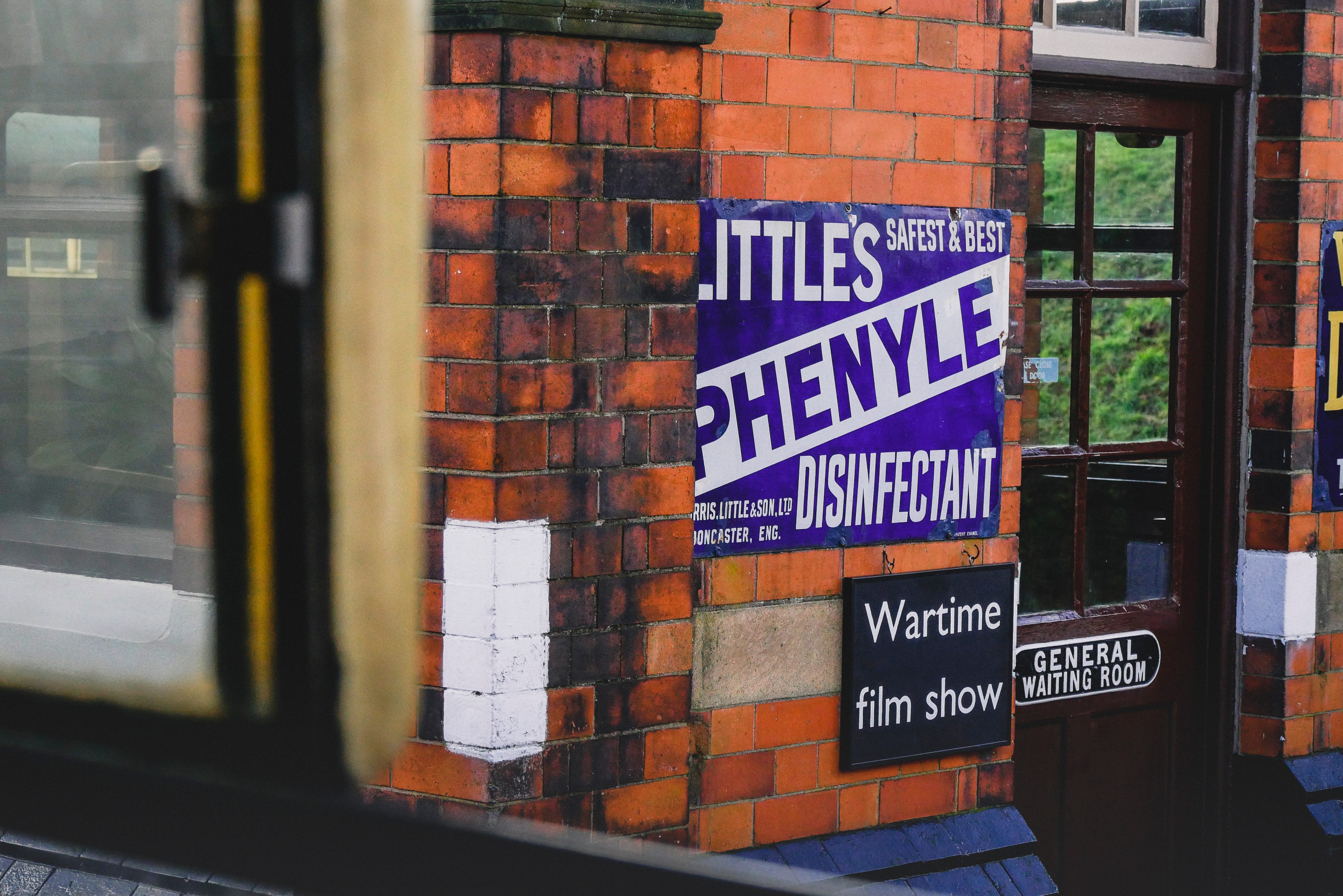
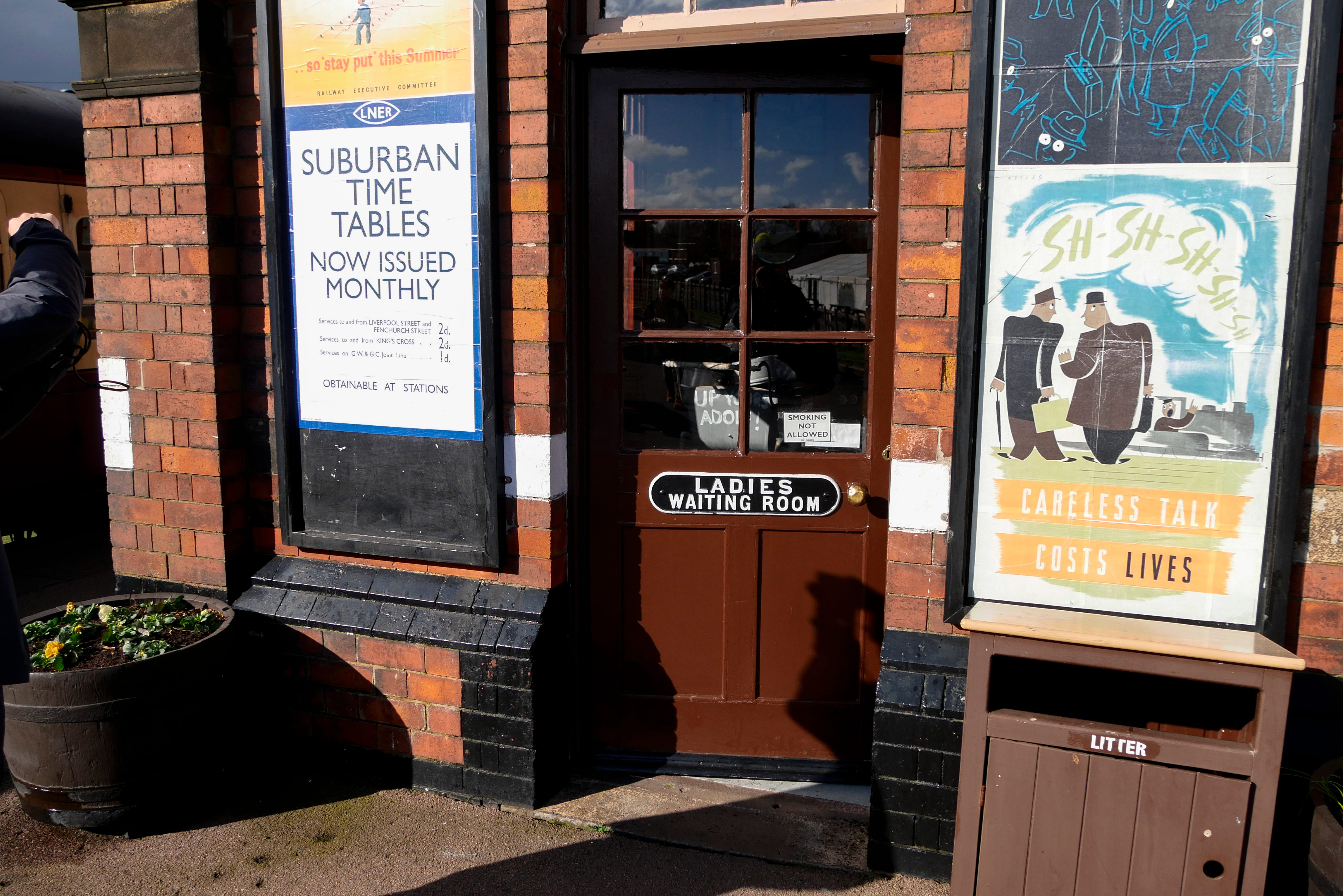
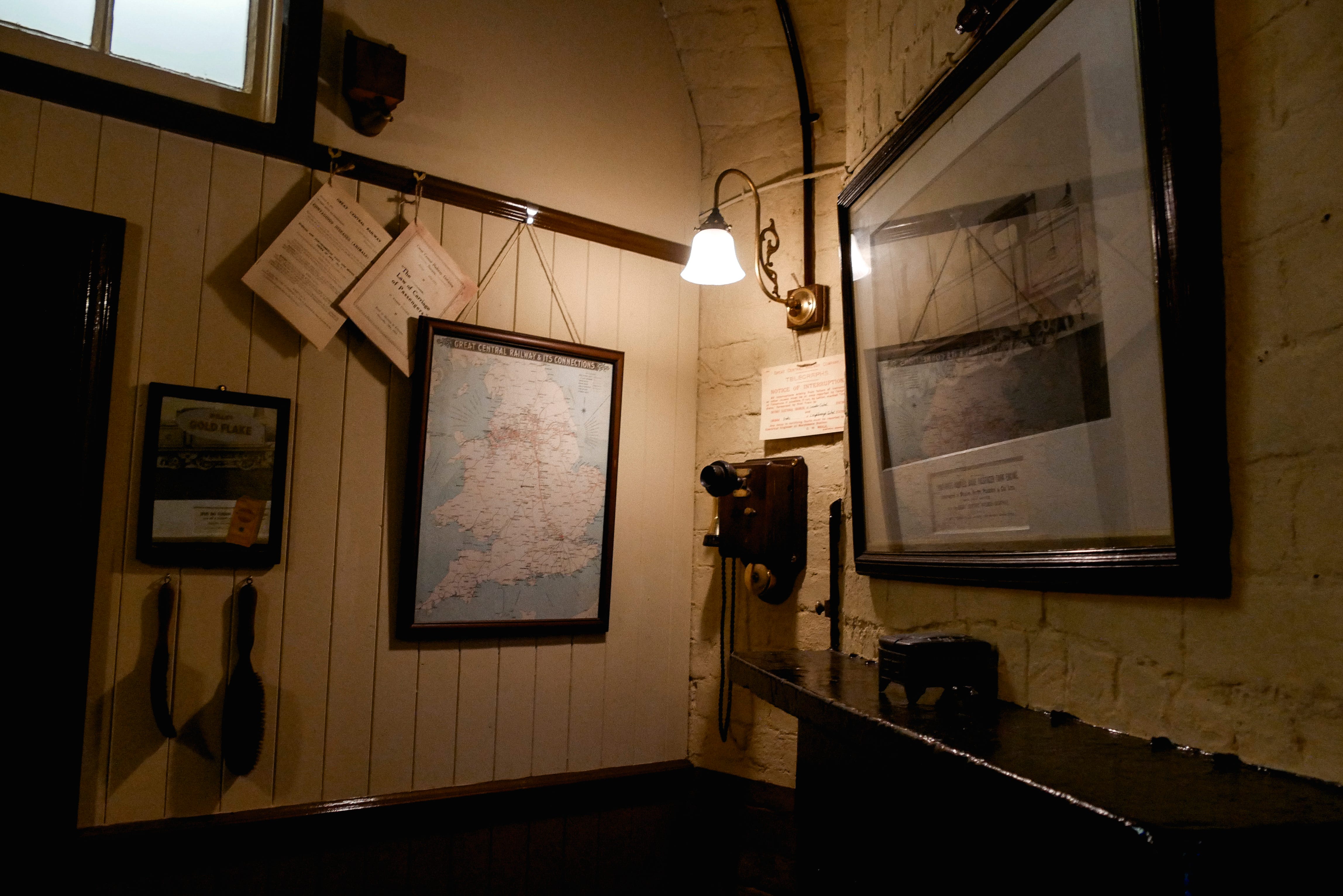
There are various items of interest within the waiting room, including a bit of wartime propaganda, and a lot of advertisements of various rail services in the area. They look ancient, but to be fair they are restored from (merely) 40–60 years ago.
Beneath the stairway from the road bridge to ground platform level is a mini museum. Again, there are various advertisements for rail services in the area, as well as various lamps and signalling equipment for the station master. Apparently the station was ran entirely by gas and never had any mains electricity before its closure by British Rail.
For a moment I thought the pigeons within the cage were real, for they were actually somewhat moving and banging against the cage. But a close inspection shows that they are light-weight wired puppets swinging because of the passing breeze. There’s also a chocolate vending machine conveniently located next to the ticketing office that doesn’t work.
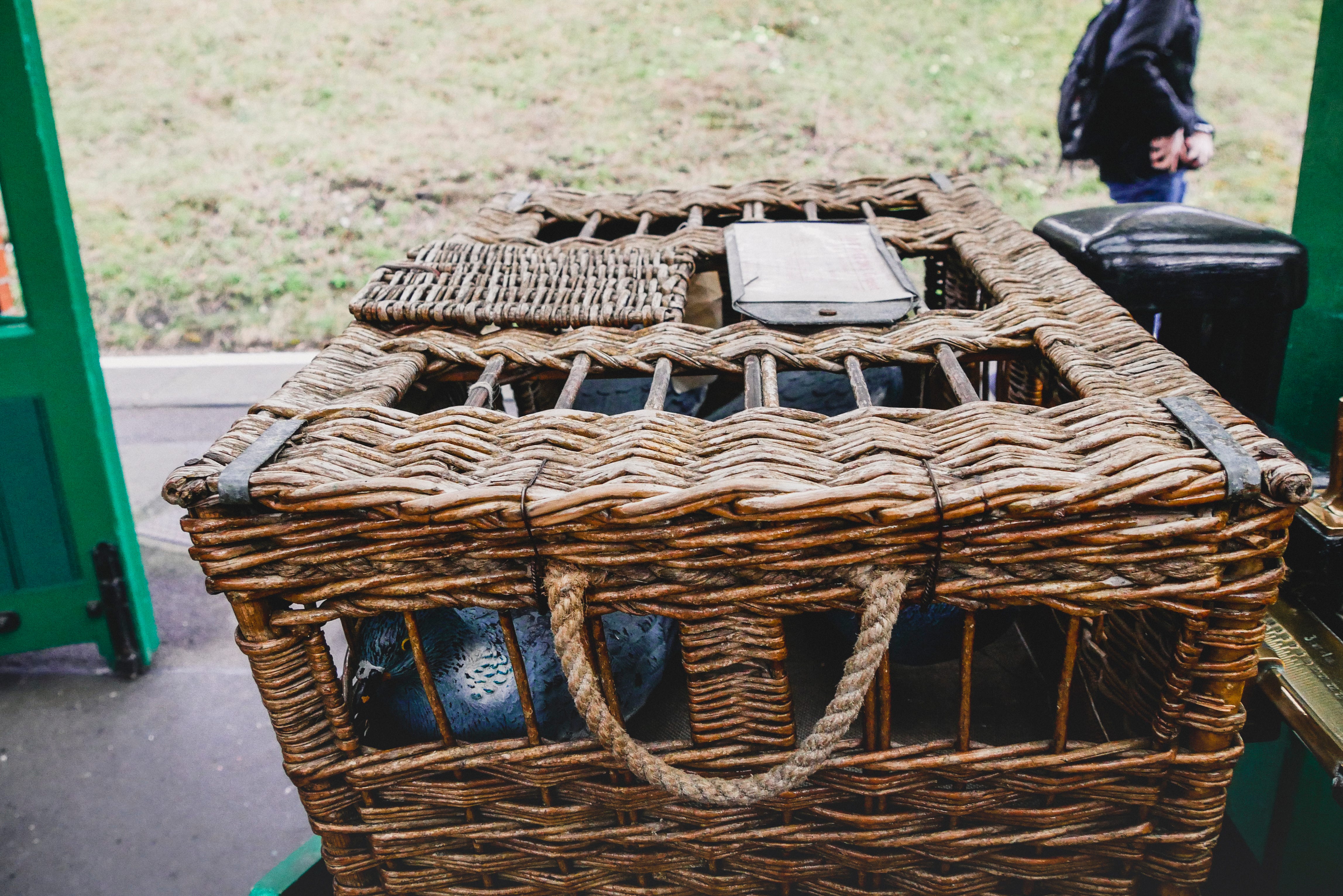
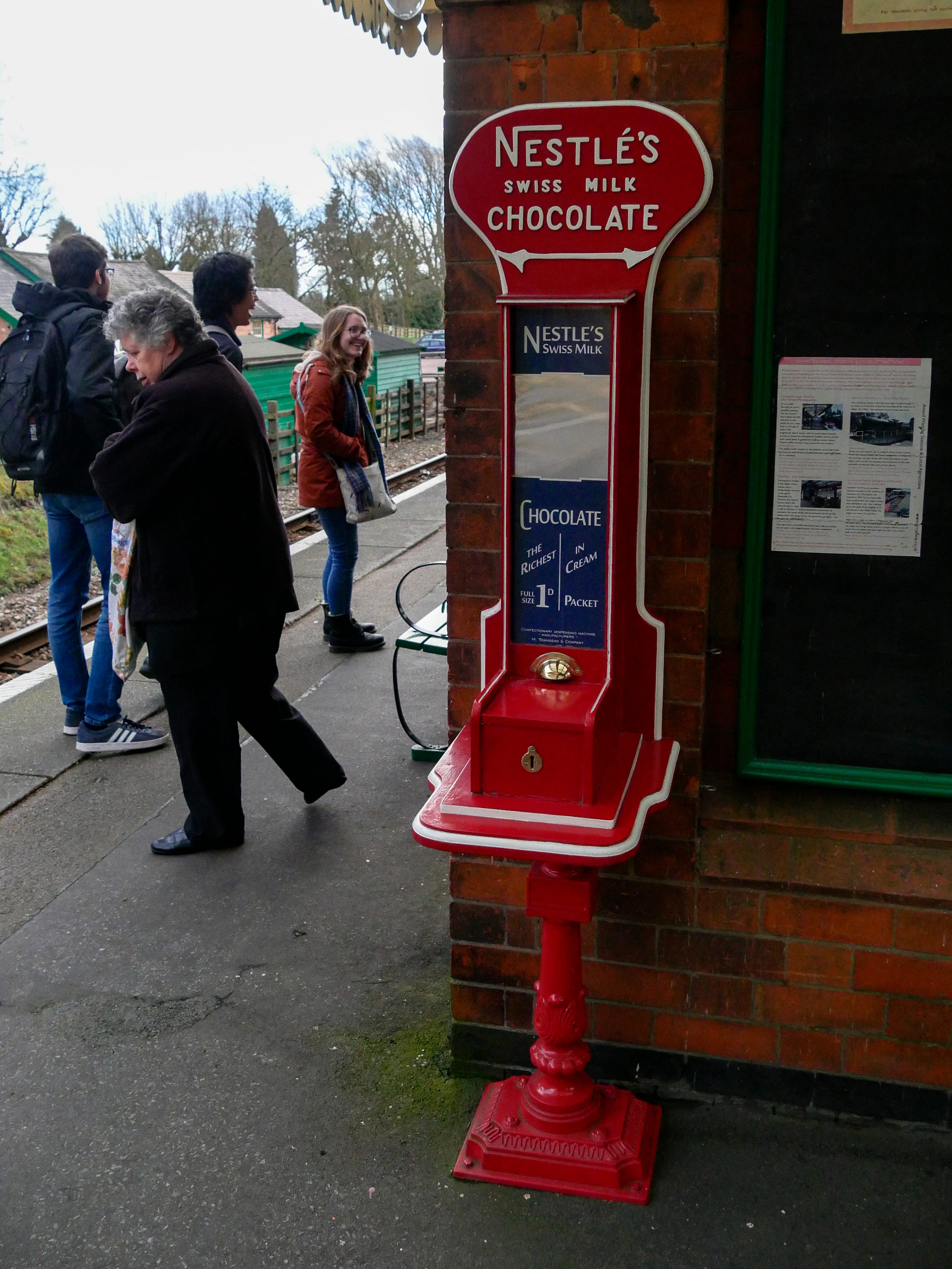
A few more sights around the station.
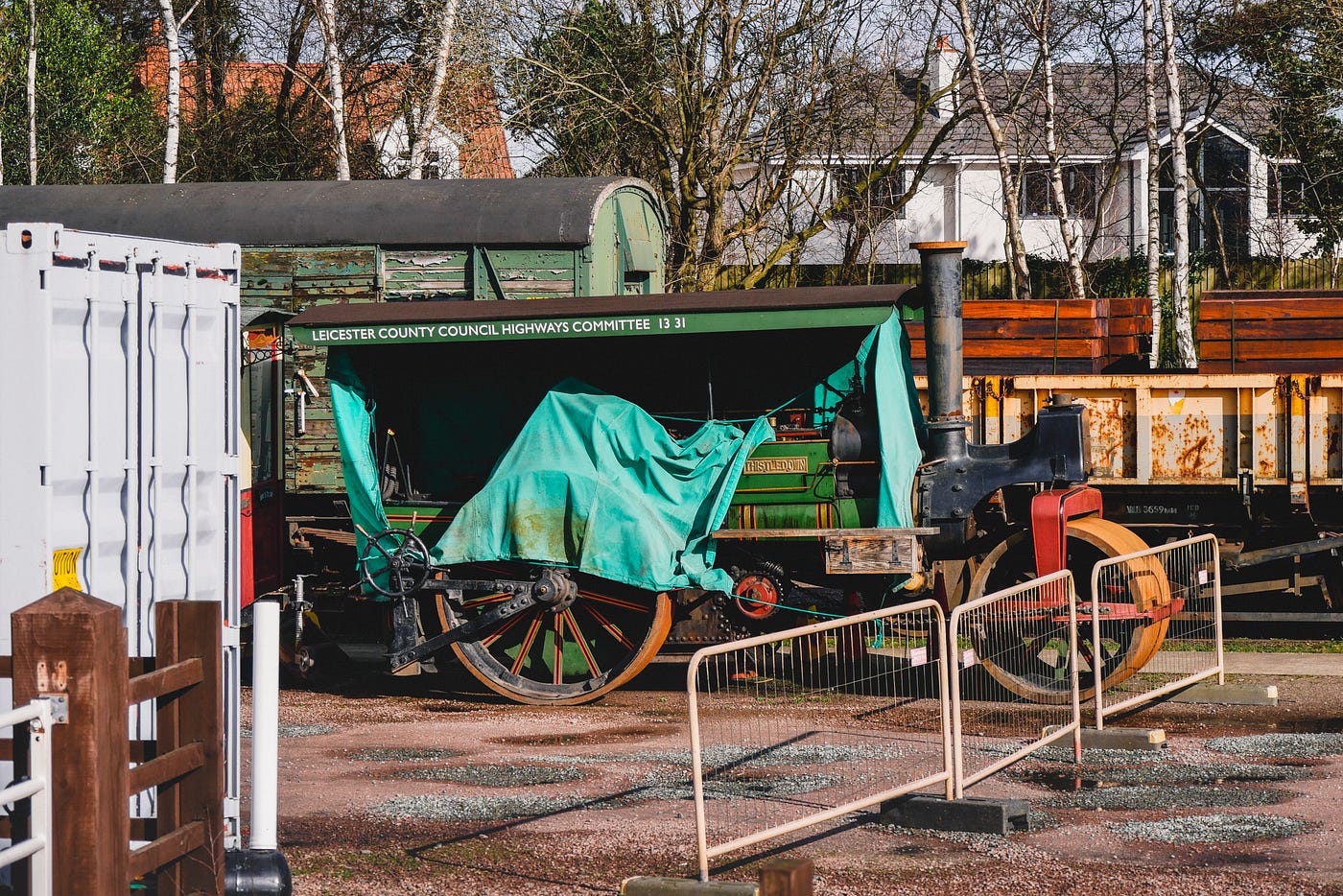
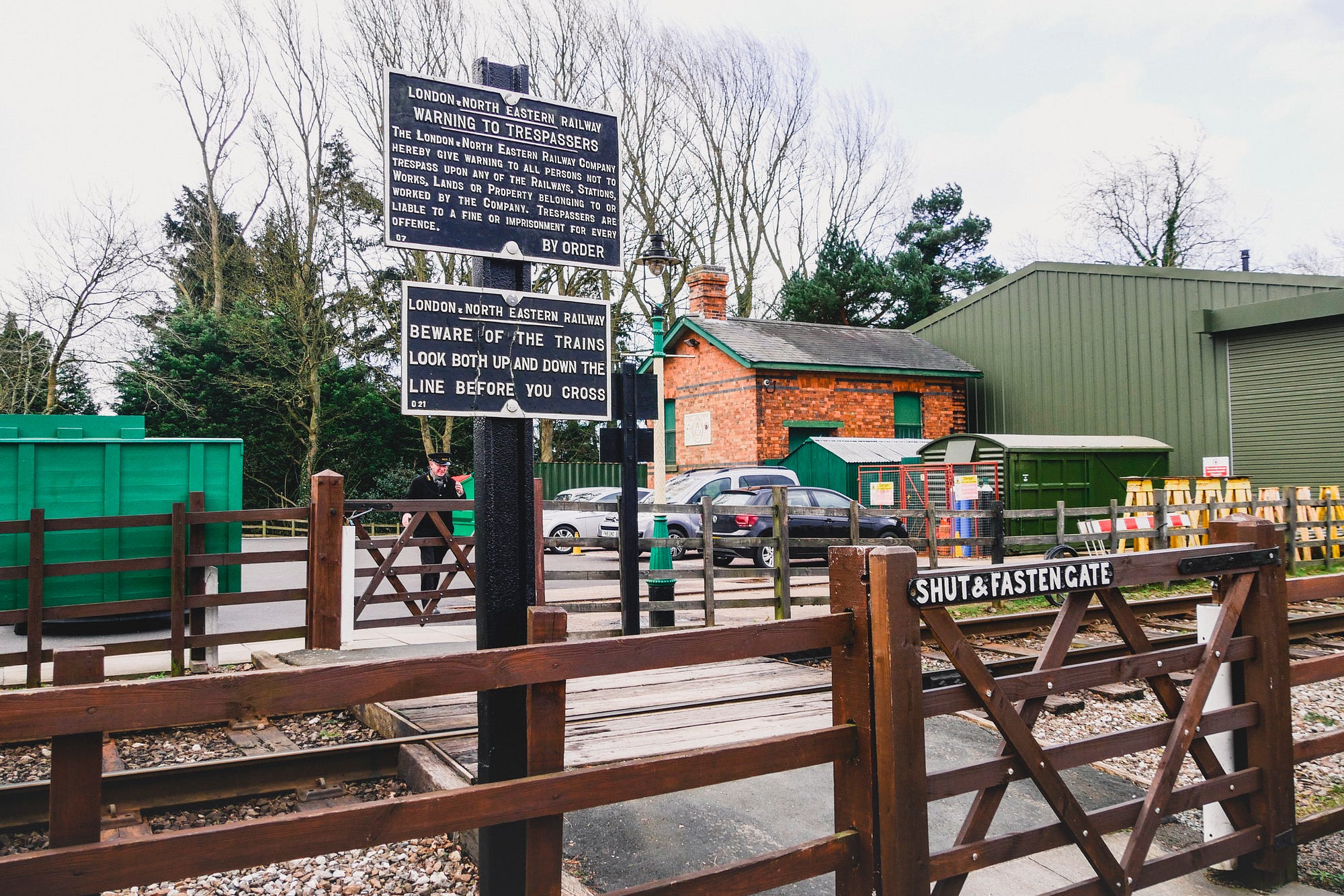
Meanwhile, I found this car in the parking lot reminds me of the 3-wheeled light blue reliant regal seen in Mr Bean TV shows. I’m not quite sure why turning or crashing it has become a running gag in Mr Bean shows, but given the anonymity of the driver in his shows, I do sort of wonder who drives this……it’s just that the driver never appeared. Not that the car drives itself anyways…… or does it?
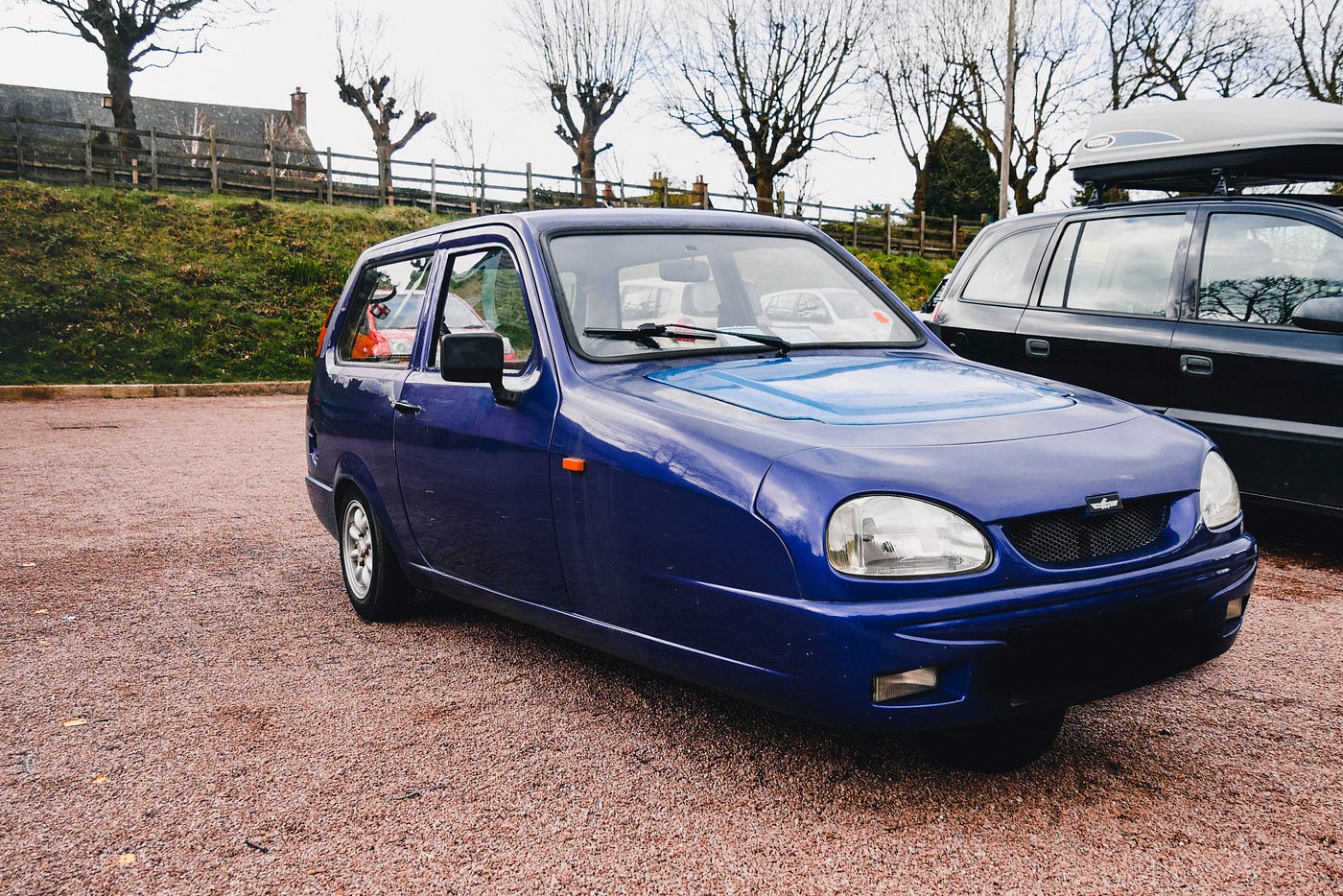
Before we leave for another journey, we caught a brief glimpse of how the signalling used to work. This token system of railway signalling is often used on single lines due to the greater risk of collision when the signalman screws up. As a matter of fact, this is also the signalling system used at the Welsh Highlands Heritage Railways. Safety is ensured by having a single physical object available for the single track section, i.e. the token, and ruling that a train may enter the section only if the driver is in possession of the token. In theory the token is locked in a signalling box when not in use, and each token is slightly different to prevent mistakedly using them on adjacent rail section.
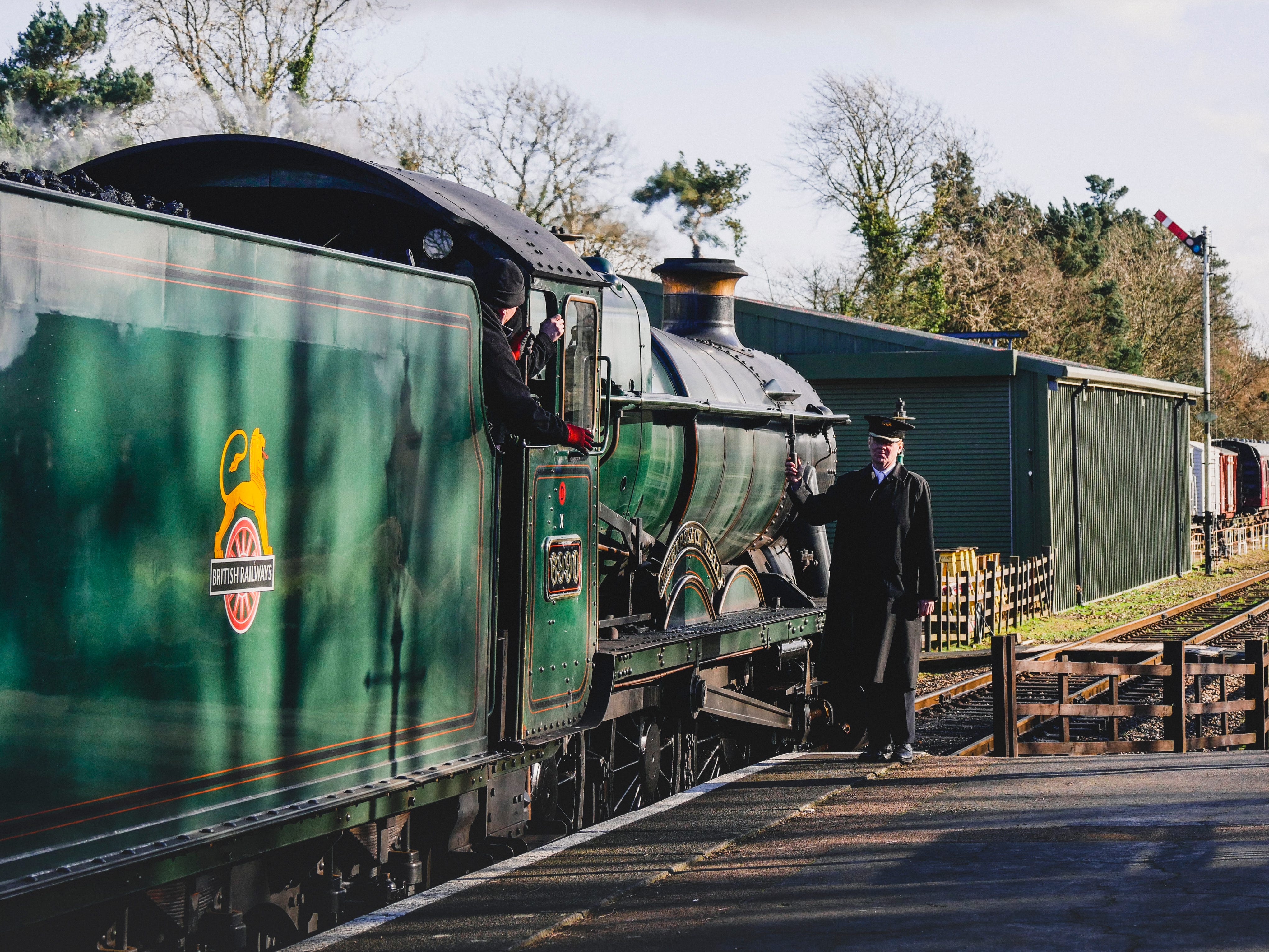
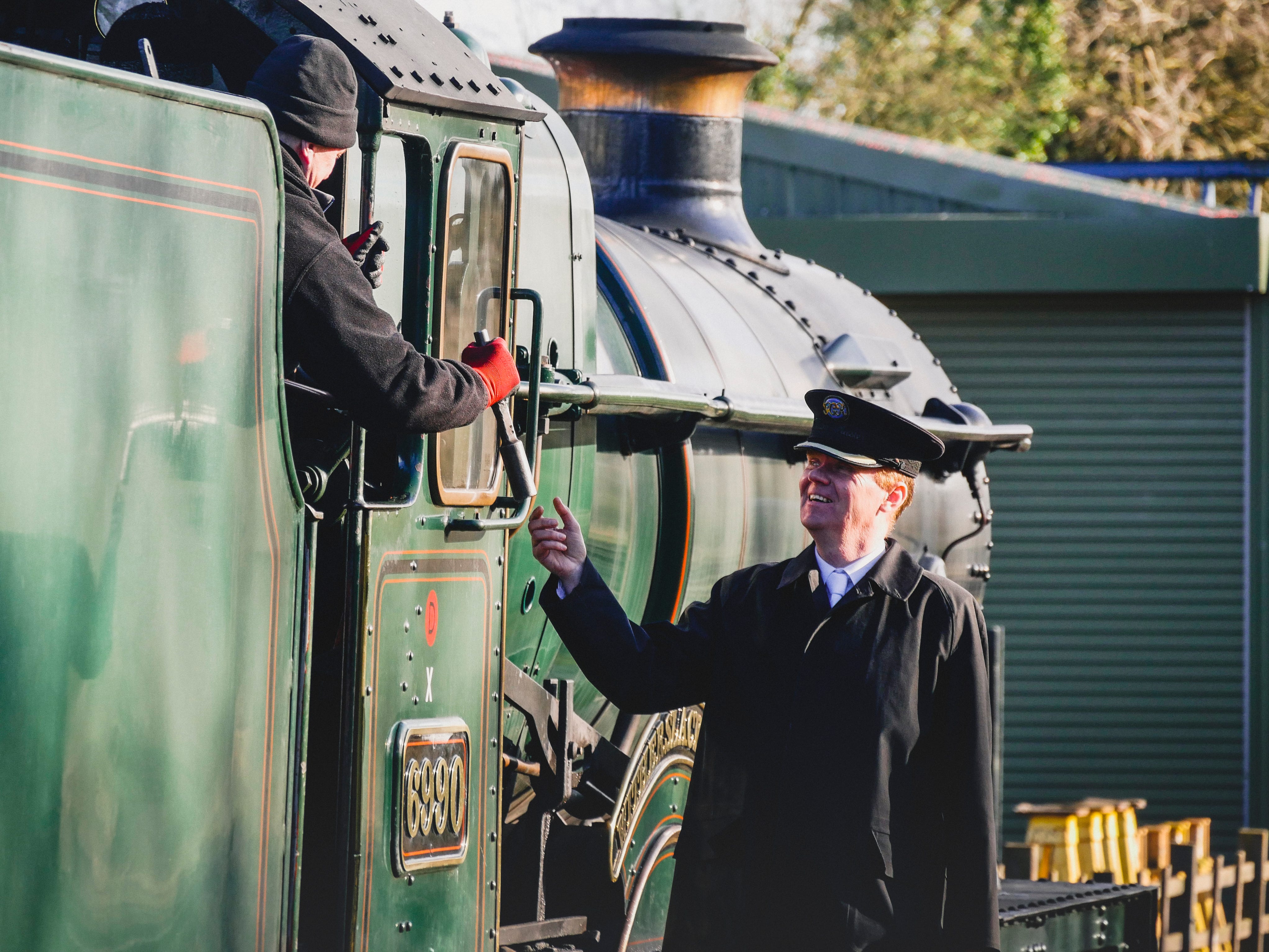
Automated electrical signals are the way to go, but good old tokens (that aren’t exactly old) still gets the job done reliably.
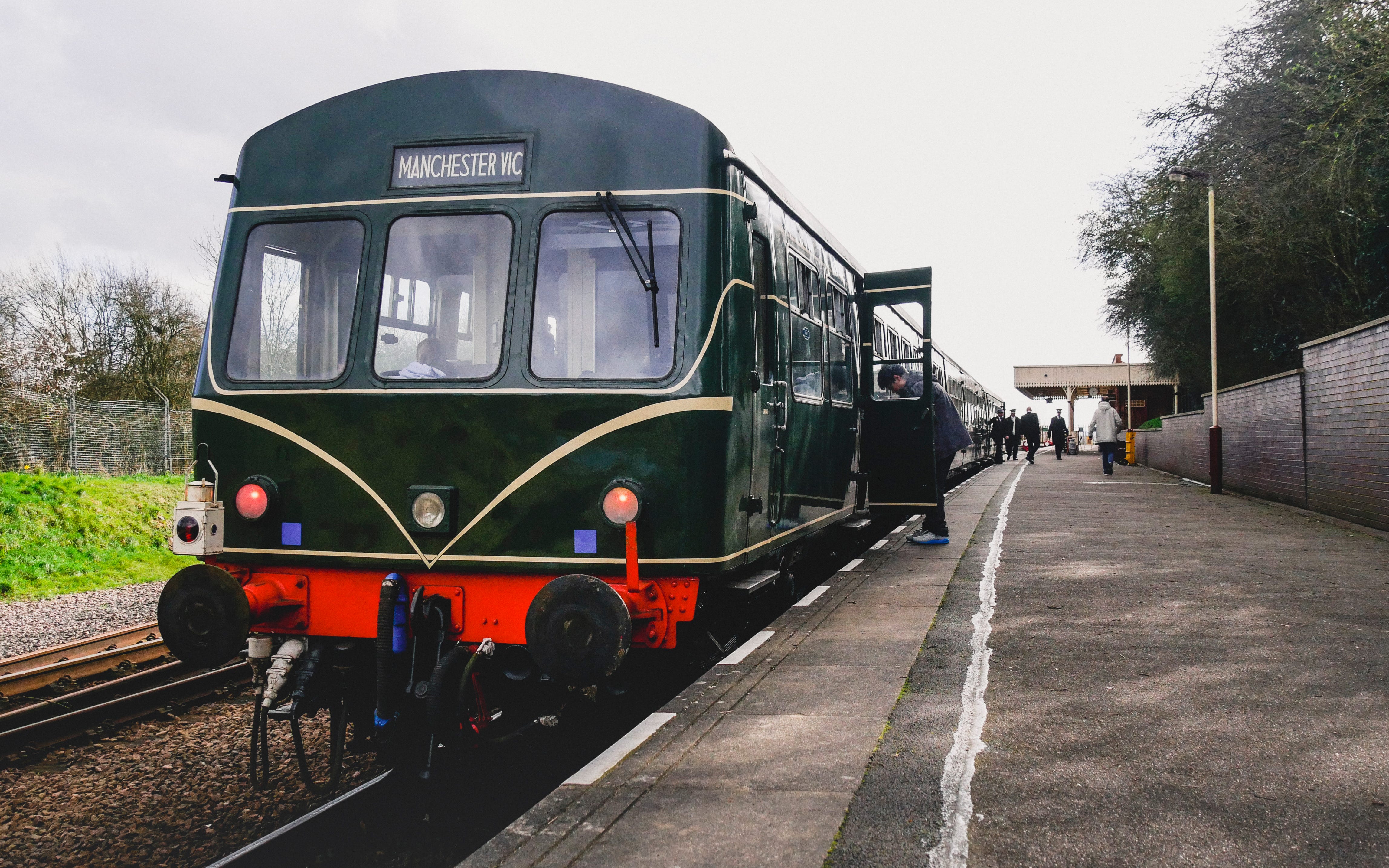
British Rail Class 101 Metropolitan Cammell DMUs
Subsequently we boarded the British Rail Class 101 Diesel Multiple Unit (DMU). It has a distinct BR line-green livery that very much resembles typical綠皮車s in China, and similar to many trains in China and Taiwan, there is a “V” in front of the train, which many enthusiasts say is a symbol for “victory” during wartime. Nonetheless, these DMUs are built in the late 1950s, and are some of the longest-living trains we’ve ever since, the oldest of which retired in 2003 after 47 years of service.
The motor noise of this DMU isn’t very familiar, but I certainly feel right at home when I see this logo!
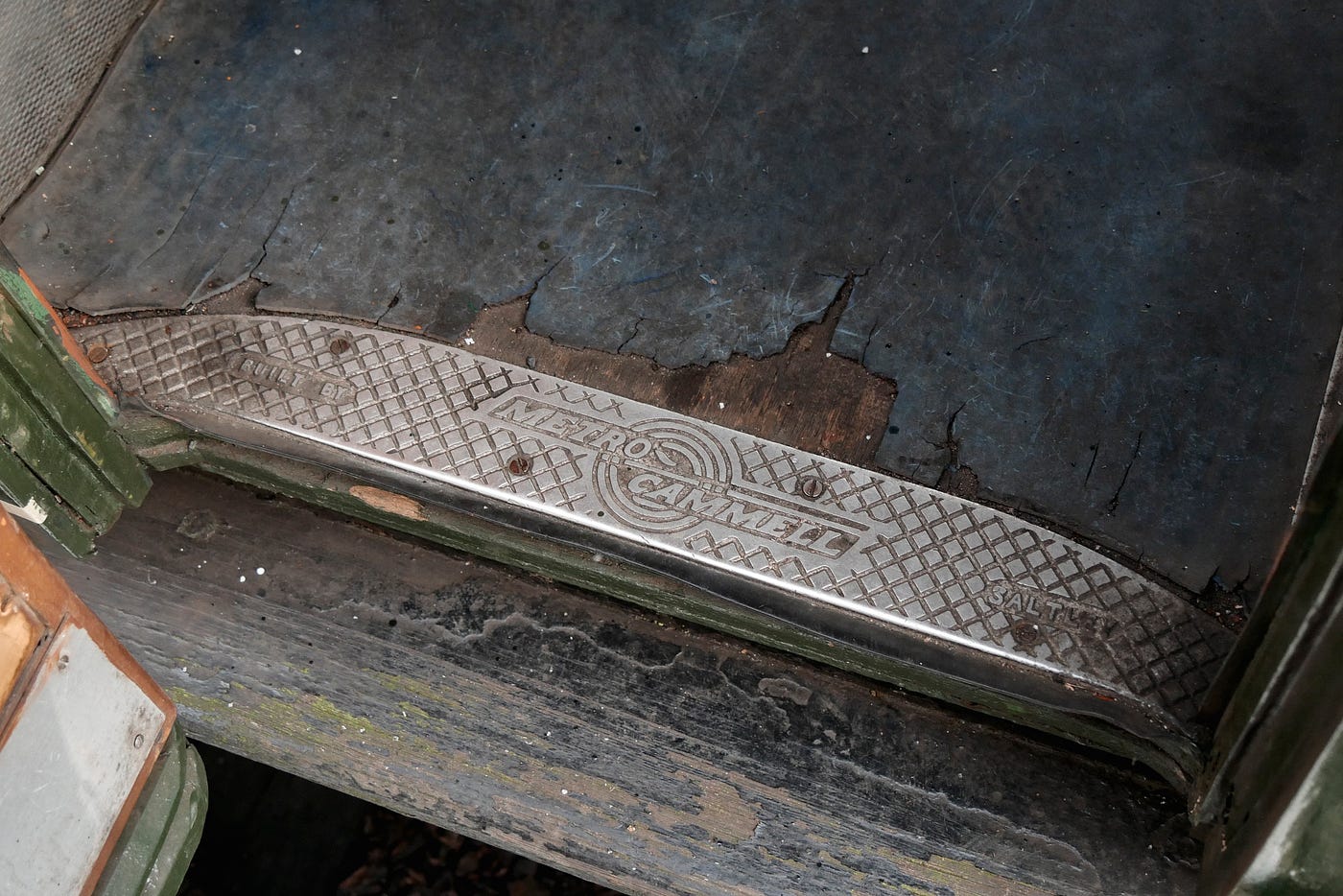
A view of the interior of this British Rail Class 101, with a 2+3 seating arrangement. The pristine purple moquette of the seat looks luxurious, but not necessarily so with the incoherent orange dividers. That said, they are very comfy compared to modern day tube seats, and even more so when compared to the plastic DLR seats. First class seats on these trains are purple as well, except they have headrests and are placed in a 2+2 configuration.
The fluorescent light tube at the centre of the ceiling is also absolutely a very 60s look that we can find on carriages of the period, like the one we boarded from Birmingham New Street to Shrewsbury during our winter Wales trip.
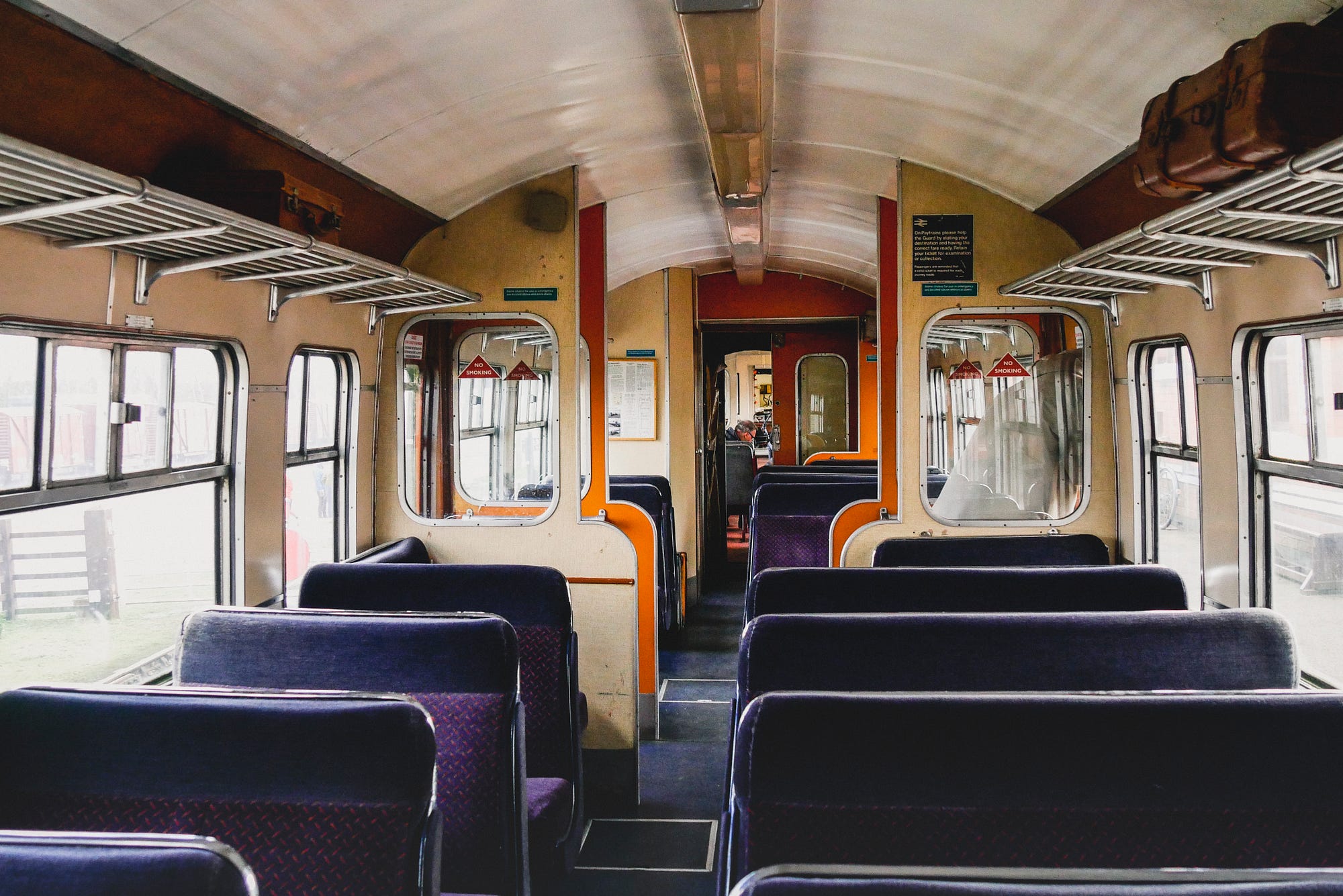
No British Rail, there’s no such thing as fare evasion on a heritage railway.
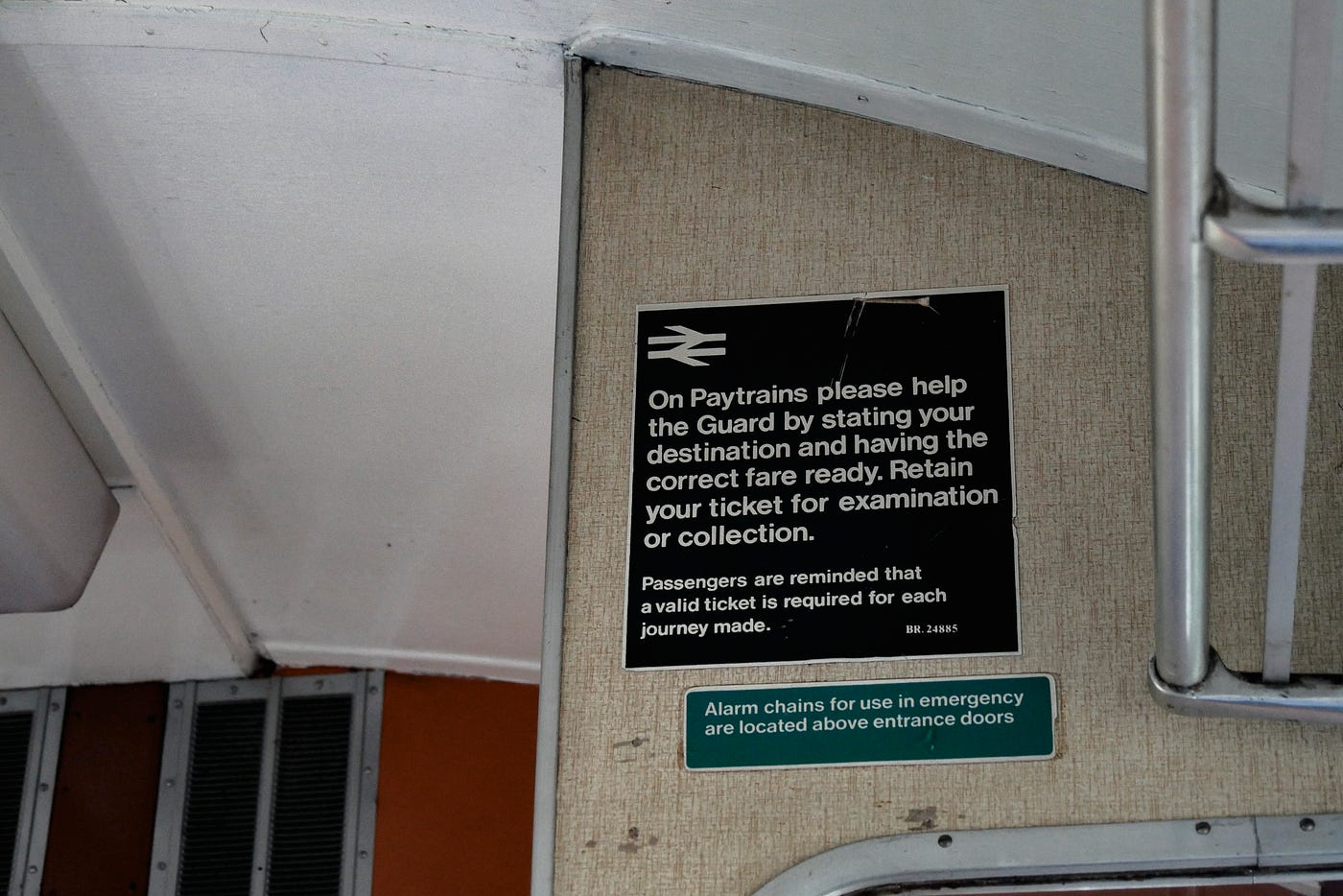
I got a view of the driver’s cabin when we approached the southern terminus, Leicester North. A very unmistakably analogue setup indeed.
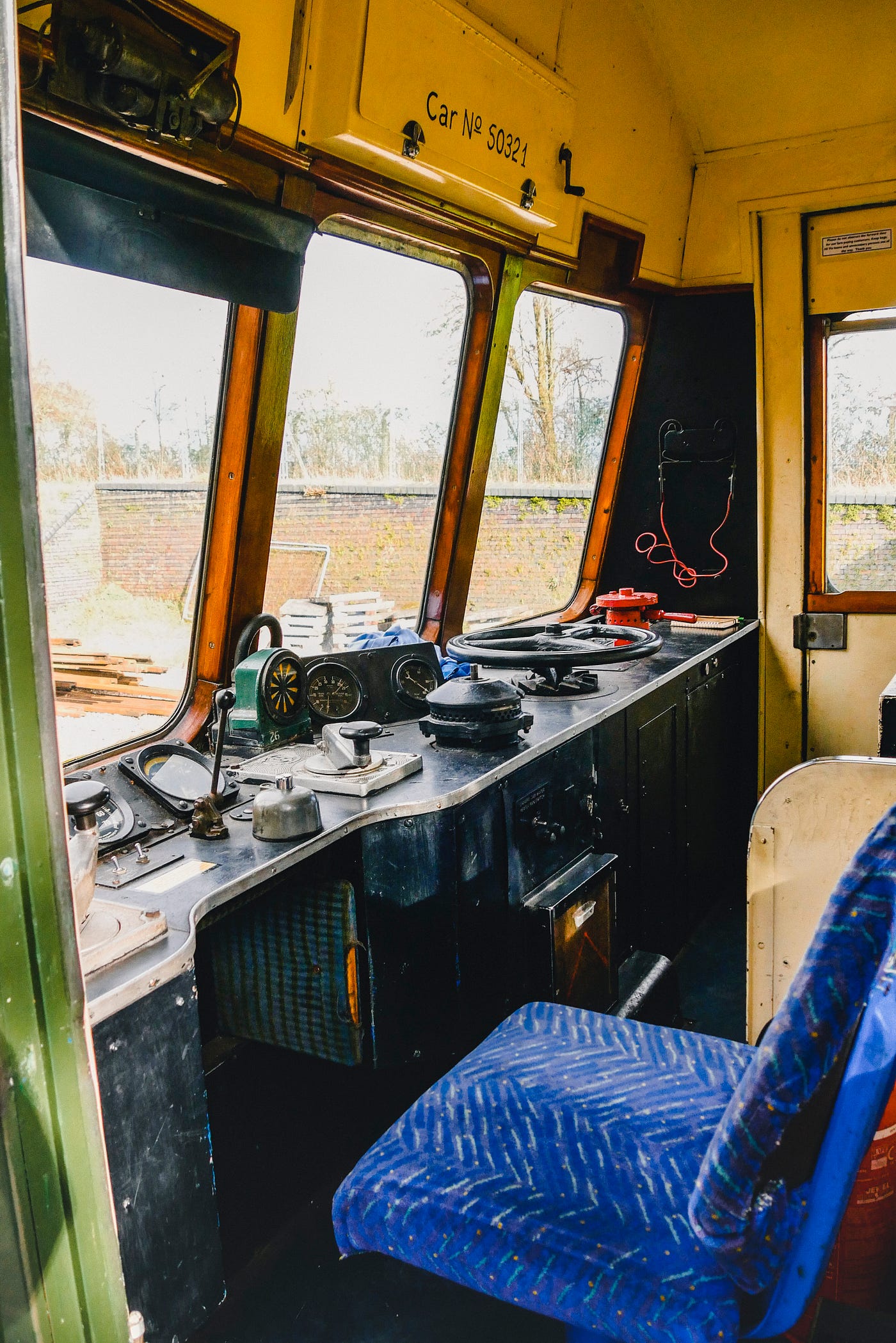
And as you can see from the photos below, the best thing is that from the declassified First Class cabin, the driver greets you before he starts driving, and you get a (almost)front row driver’s view. Things immediately look way more fascinating through this ultra-wide glass window. On this particular train, there is a driver on the left and a conductor on the right who is in charge of retrieving and passing tokens to various station masters.
Similarly, a few years back, when you travelled Business (the highest fare class) on a high speed train in China, you got a view of the driver’s cabin and the frontage scenery through a large glass window. Not that I’ve ever had the chance to do so, as a business class ticket is several times more expensive, and anyhow the railway authority later concealed the glass with transcluent material. Maybe they attract rail-nerds like us.
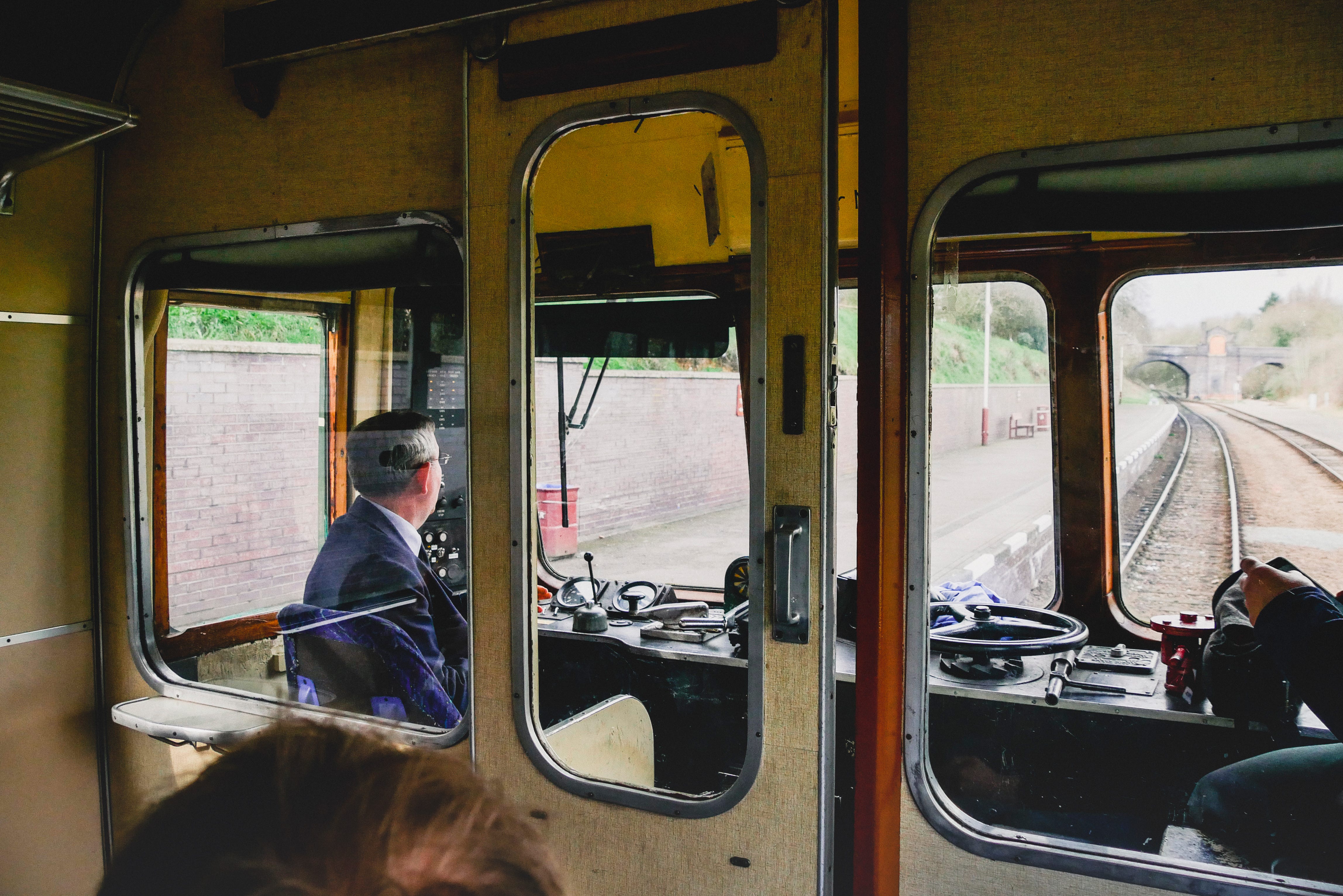
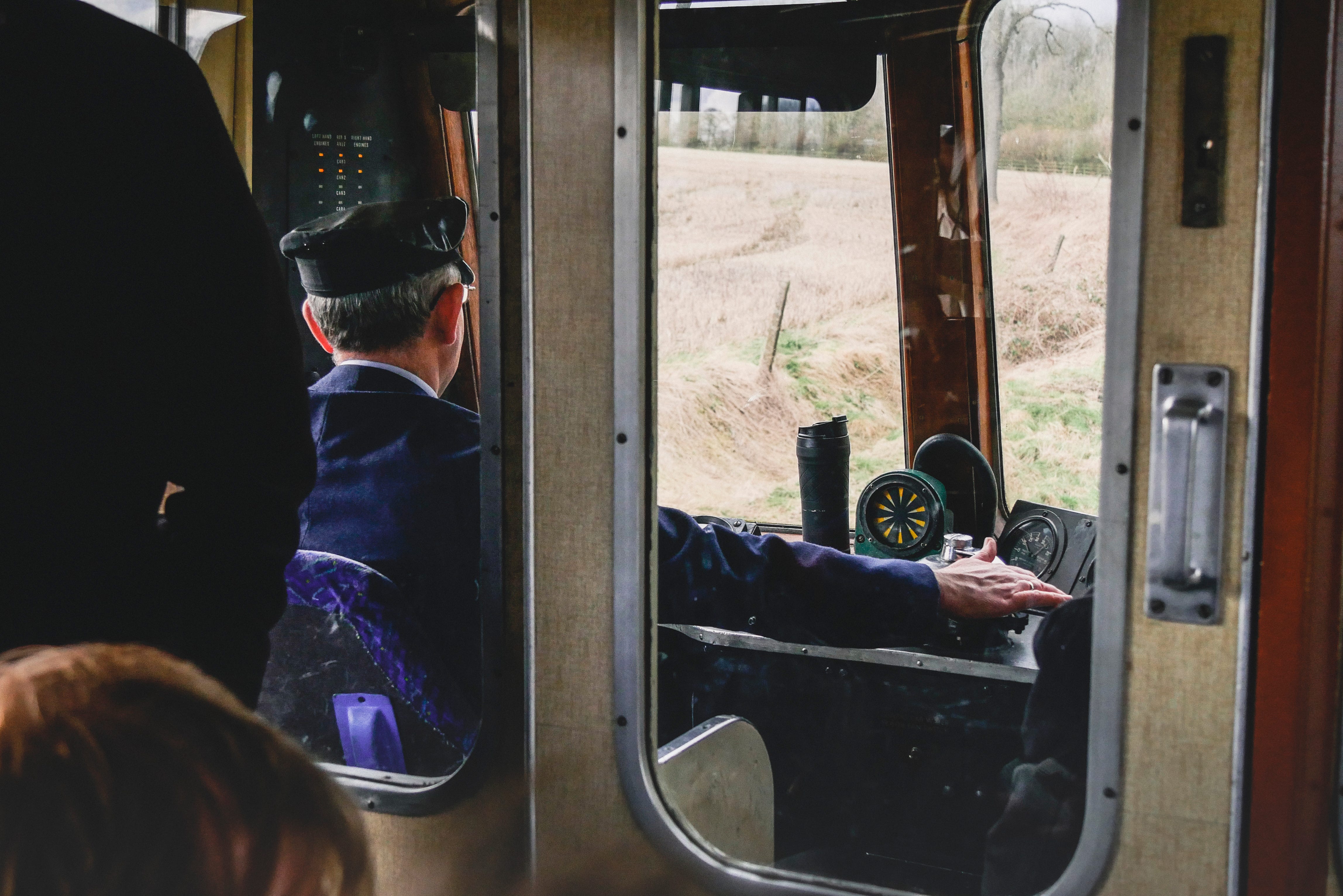
Once again, we travelled north back up to Rothley, where there are several shunting locomotives parked in front of the shed.
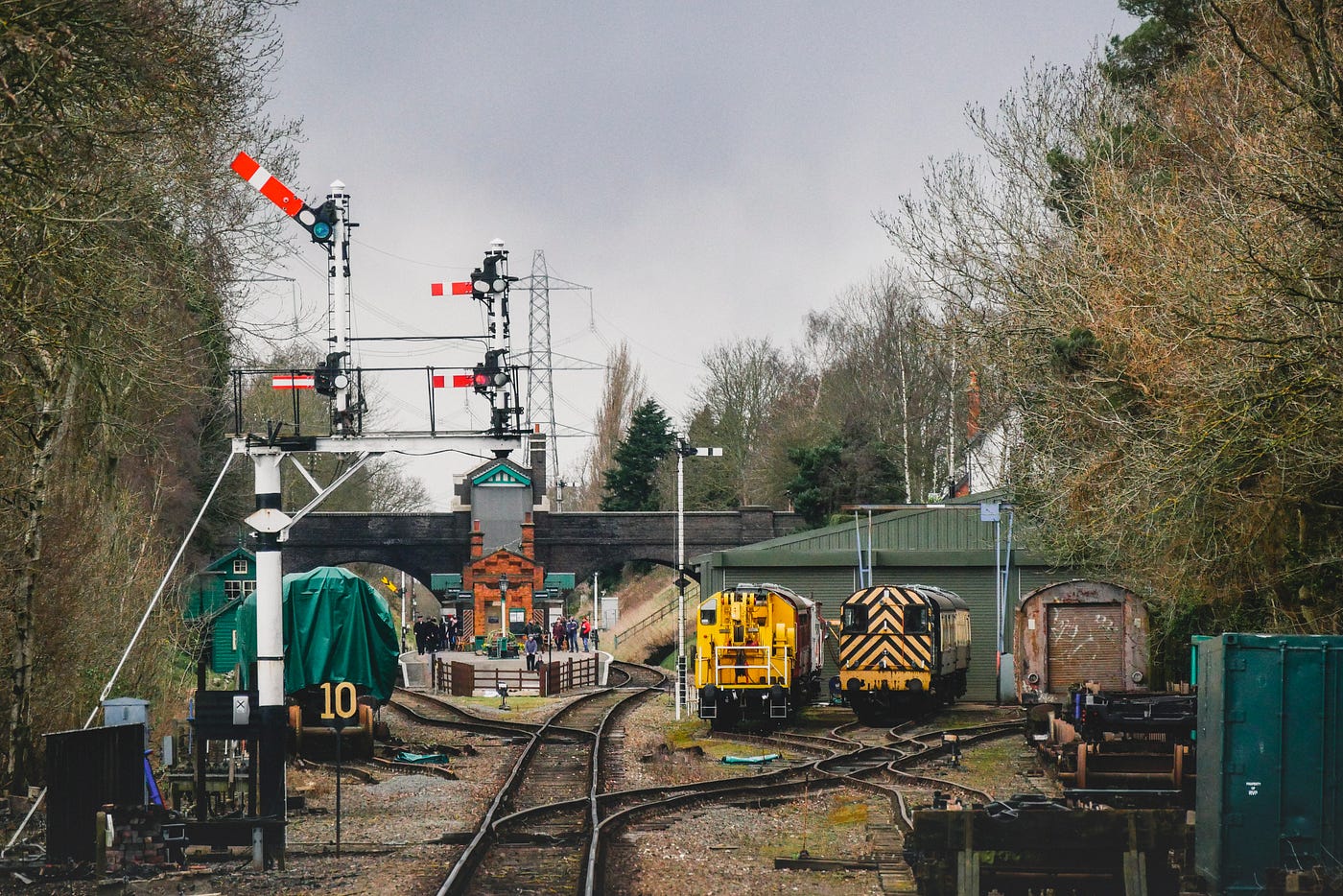
Another view of the token passing process as we approach the end of the platform.
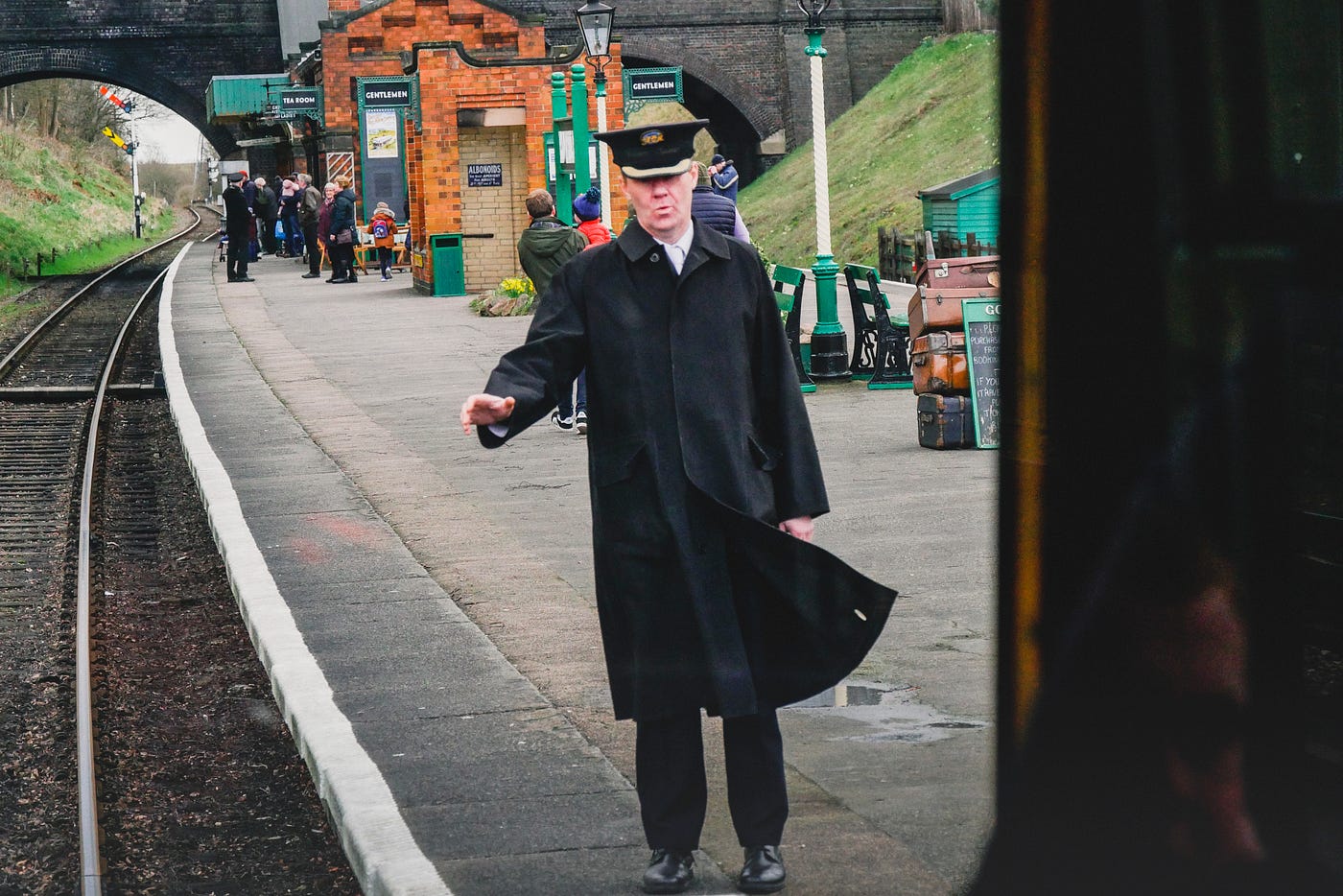
All set for departure!
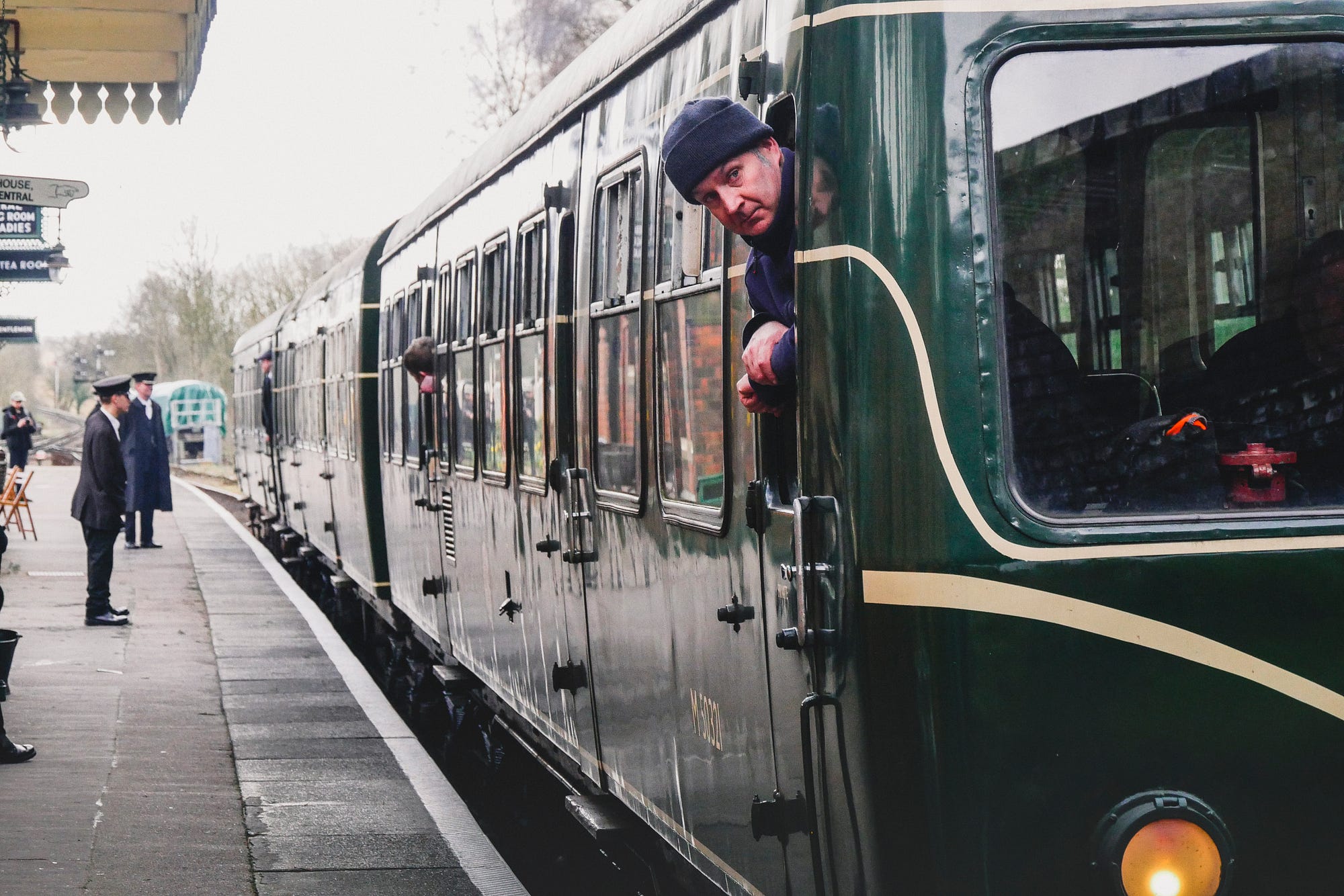
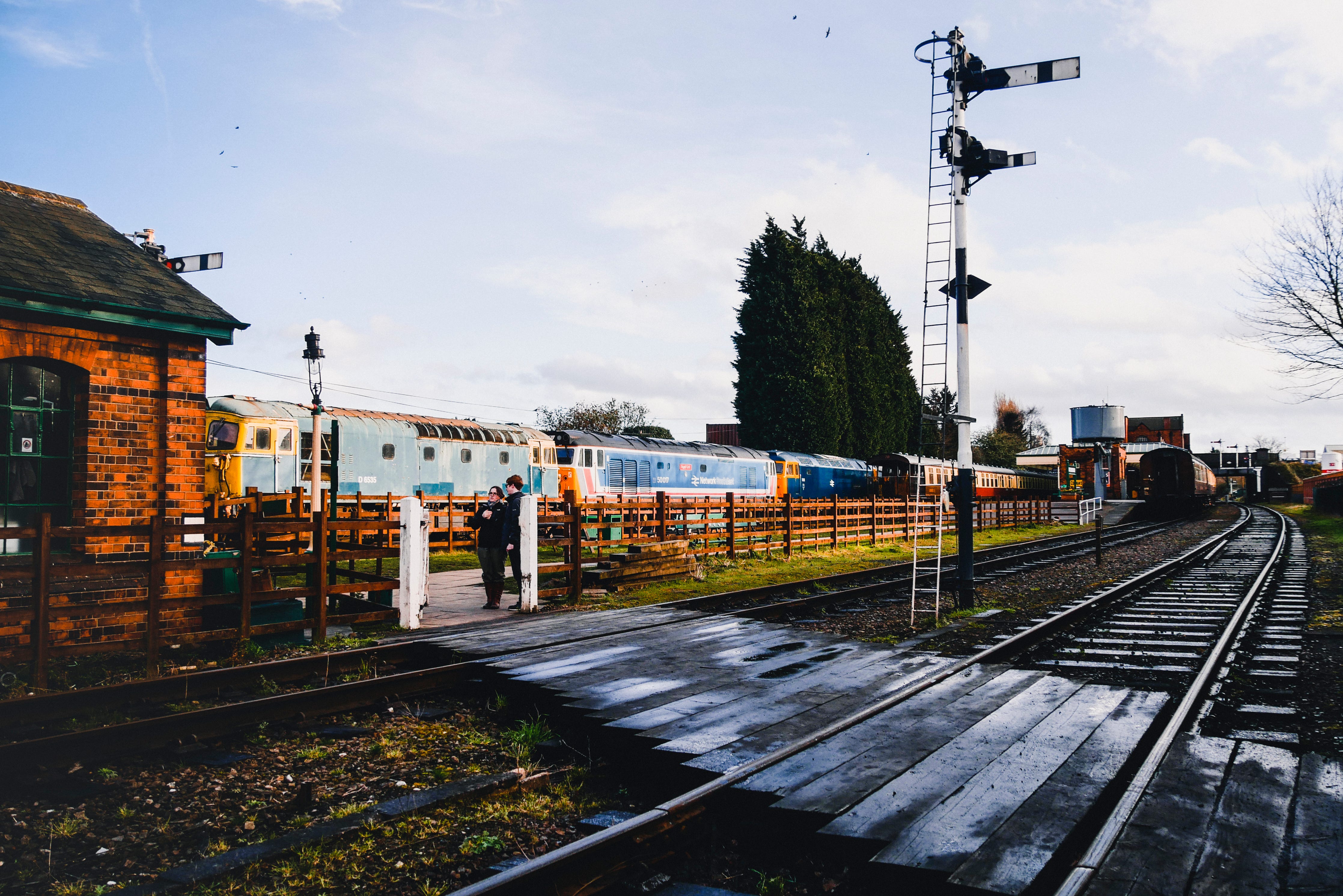
Loughborough Traction Maintenance Depot
There maintenance yard at Loughborough is a hundred yards or so north of the mainline station. Along the way, there are several operational mainline diesel locomotives, all with their original livery. Must have been a long way for that network southeast loco to travel up north to the GCR!
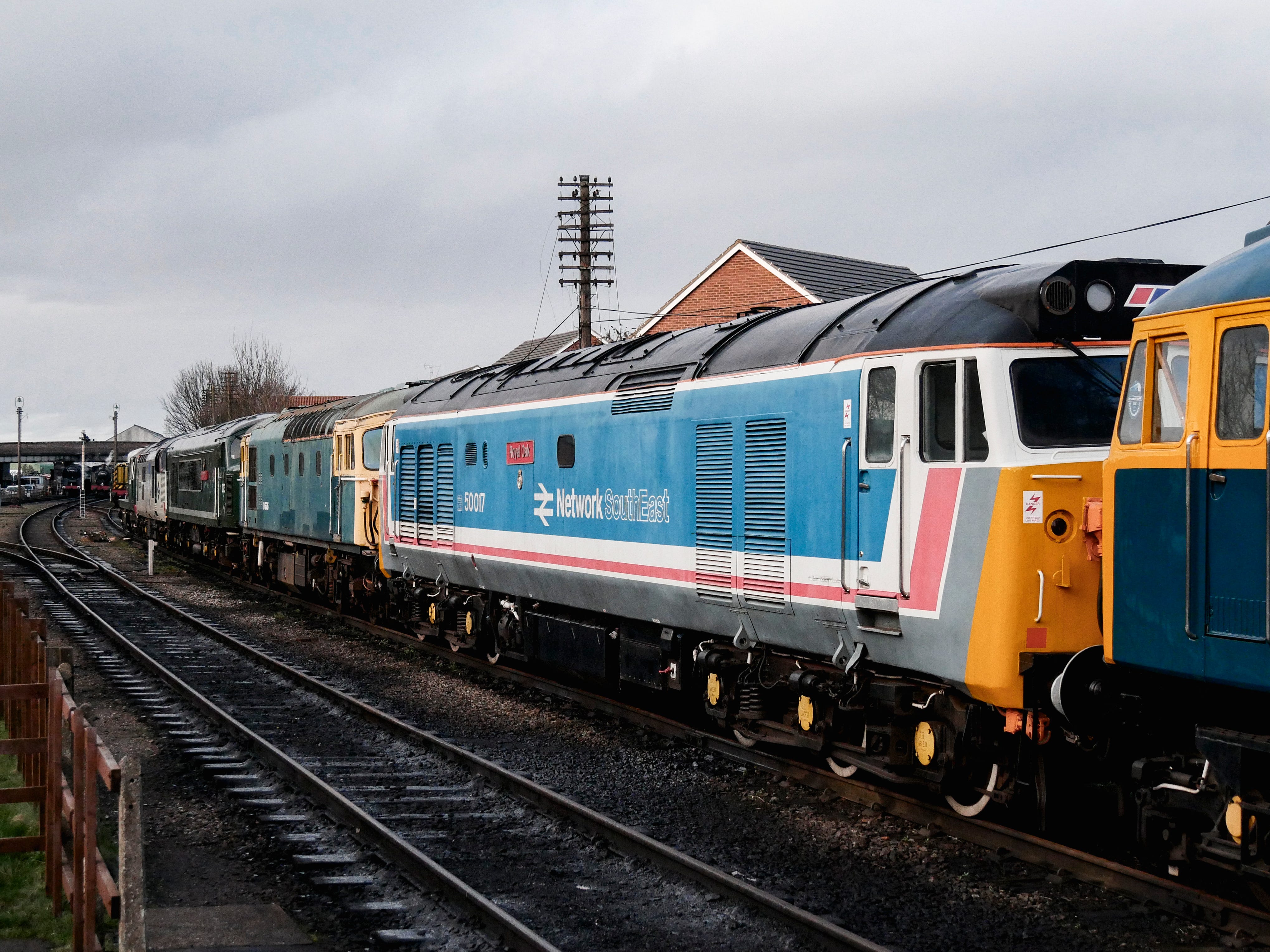
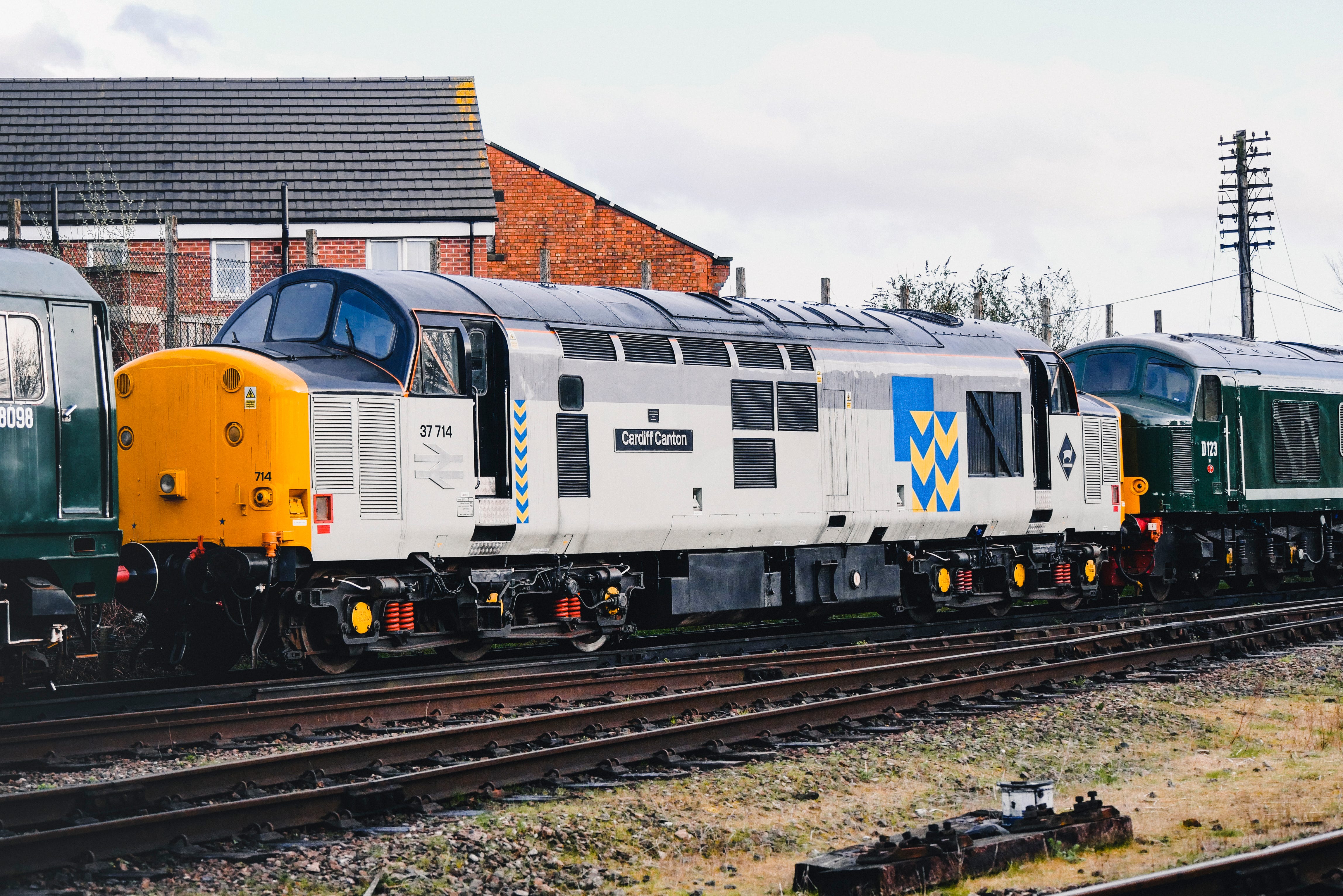
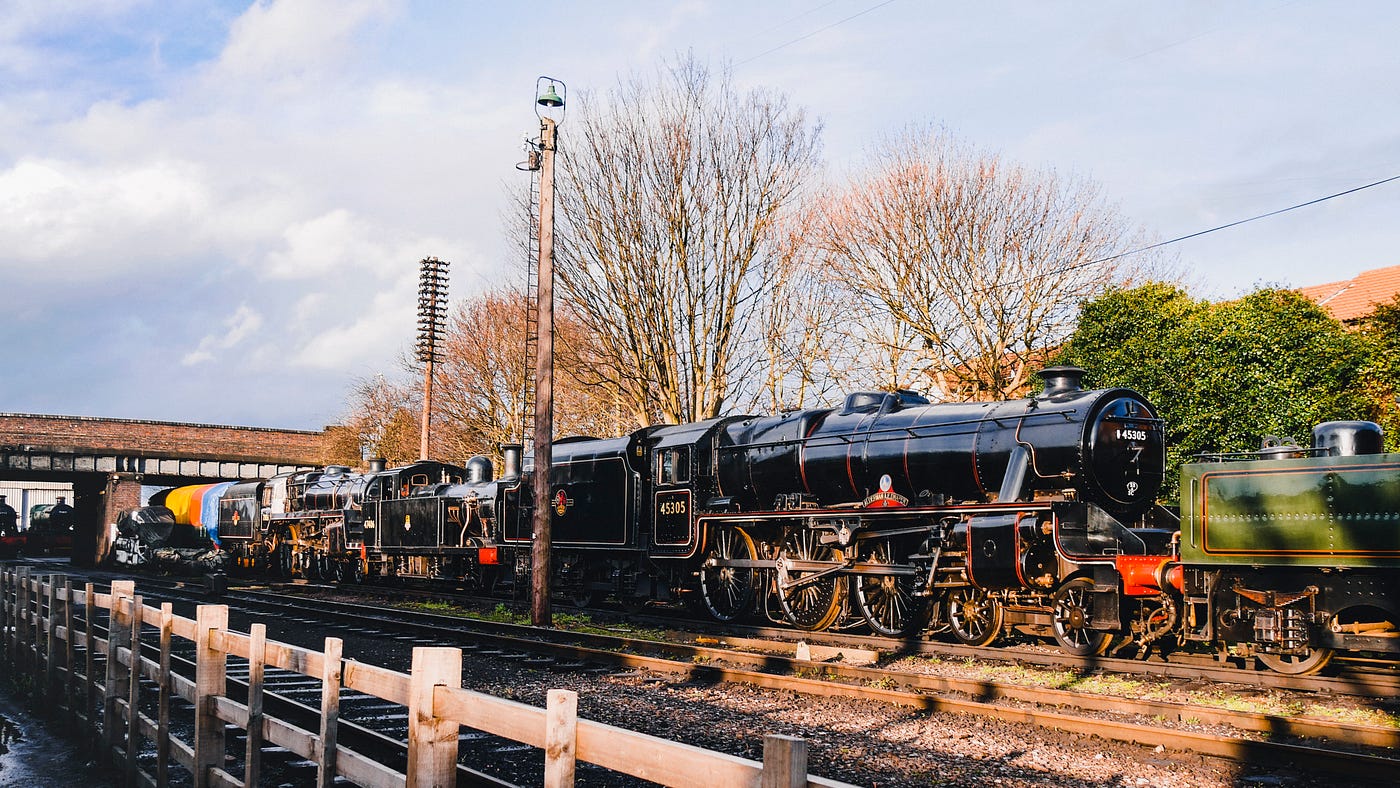
In spite of the fact that I’ve never seen any of these locomotives before, this place is practically a rail enthusiast’s heaven. Arguably, I really wish they make a shed for all these trains because they don’t look like they are enduring all this moisture and weathering that well.
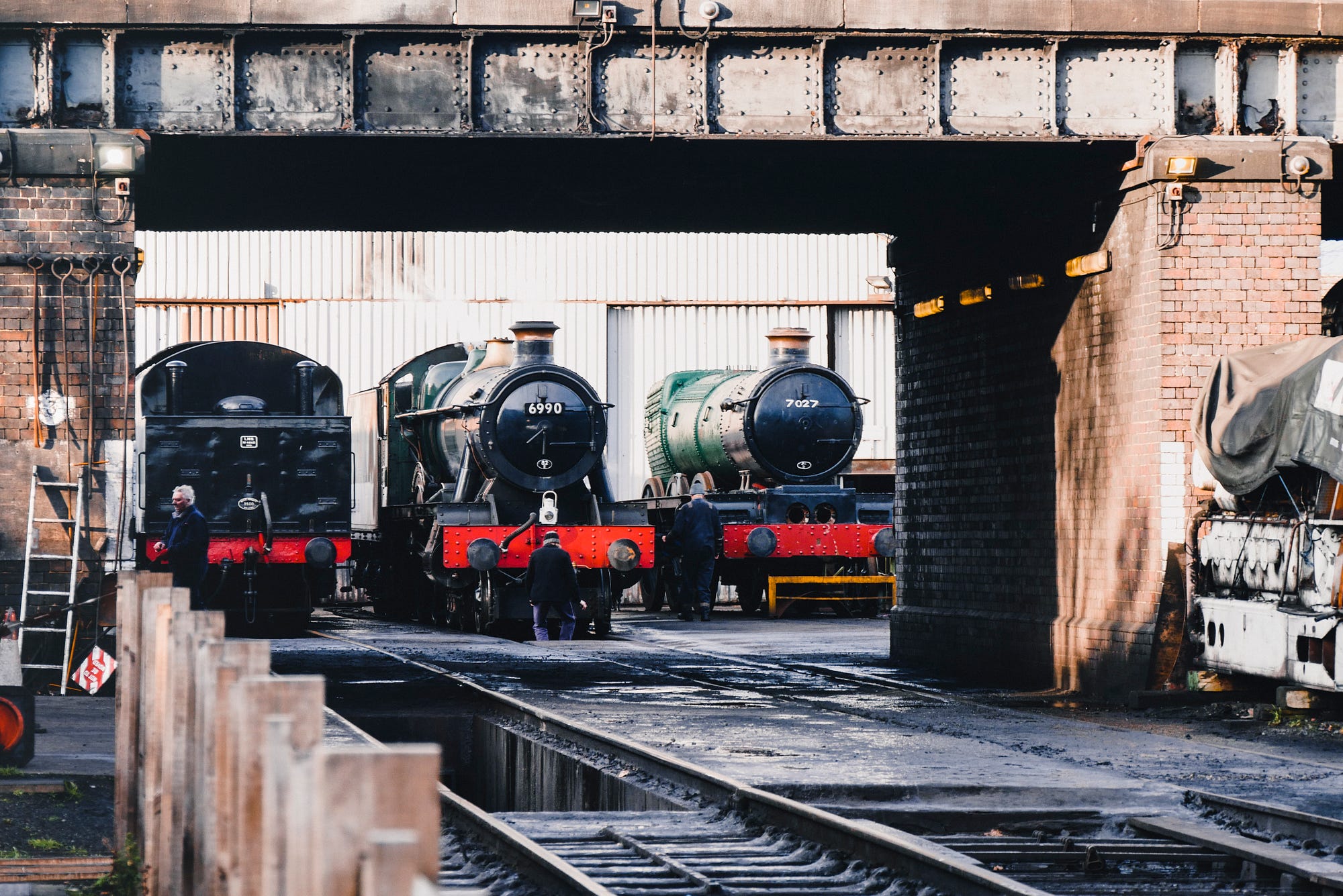
Finally, with a shot of these charmingly reflective ponds (or rather annoying puddles that we were forced to stumble through!), I guess that’s all for this story. (I’m officially calling these articles “stories” since that’s the way Medium calls them)
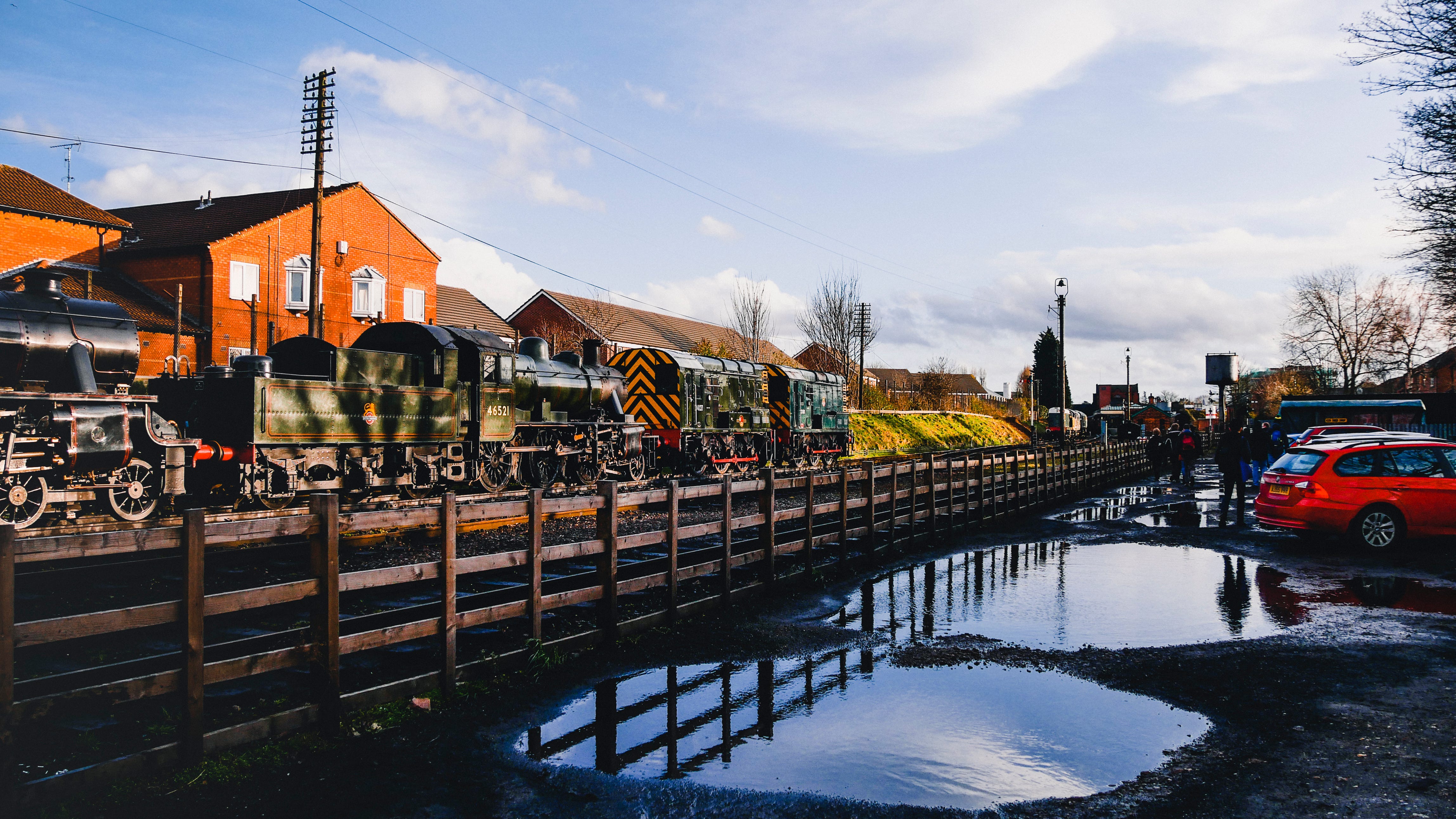
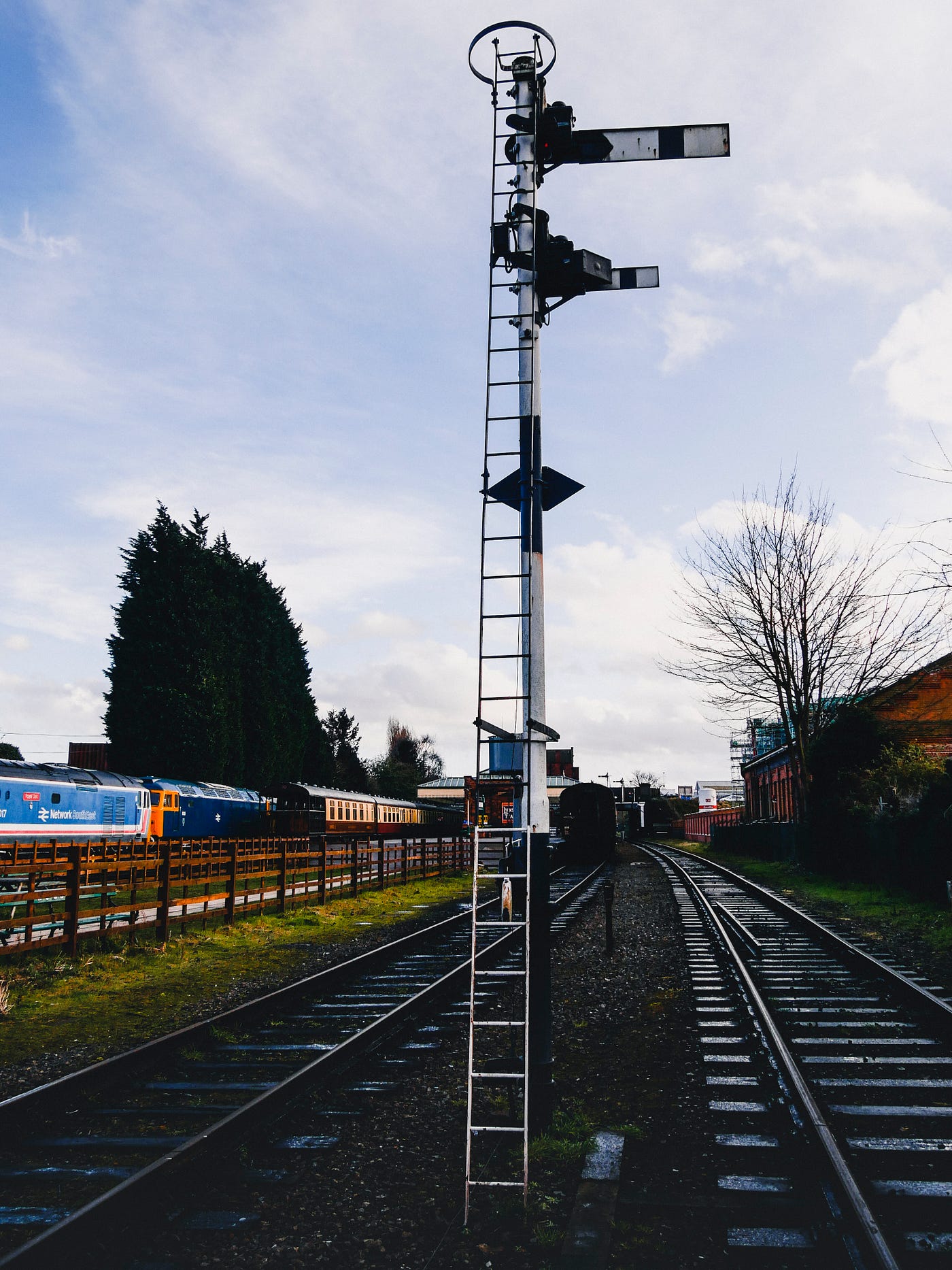
Regardless, happy steamy dreams (or dreams of the diesel or electric kind) for everyone!
Leave a Reply